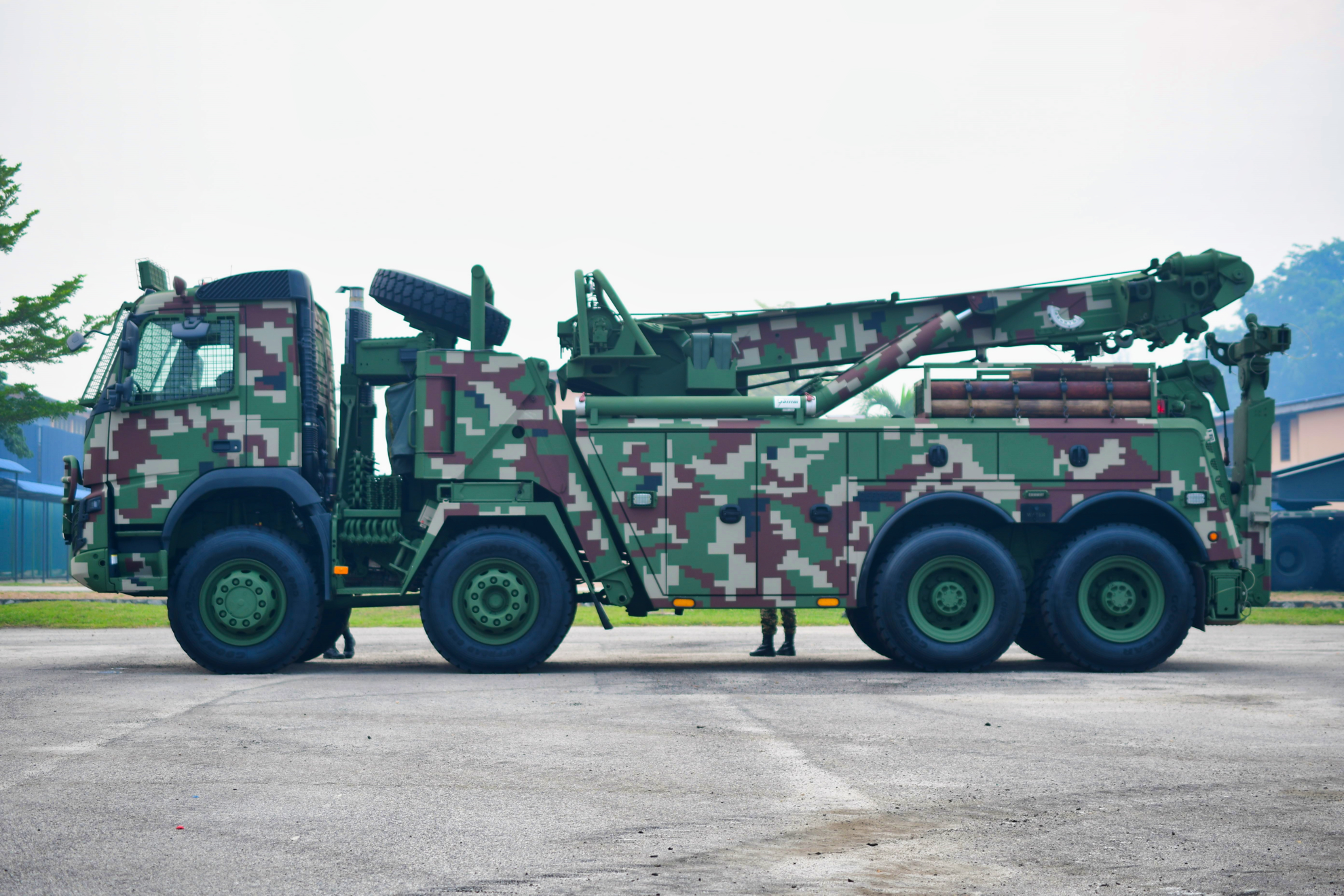
SHAH ALAM: Capability Demonstration 4th Mechanised Brigade. Fourth Mechanised Brigade (4th Mech) based at Kuantan, Pahang, hold a capability demonstration parade recently for visiting Third Division Commander Mej. Gen Tengku Muhammad Fauzi Tengku Ibrahim. Tengku Muhammad was promoted as the GOC of the division in late July, he was previously the Assistant Chief of Staff, operations and training of the Joint Force Command.
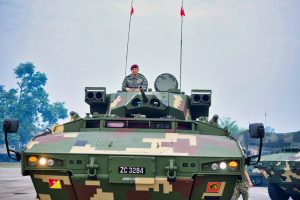
The units that took part in the parade were 12th RMR , 14th RMR, 19th RMR, 7th Royal Ranger Regiment, 1 Armour, 4 Semboyan, 4 Angkut and 4 Workshop. All of the units are designated as mechanised befitting their host brigade. Fourth Mechanised Brigade is commanded by Brig. Gen. Reizal Arif Ismail. Reizal had served twice as the commander of the Malaysian contingent in Lebanon.
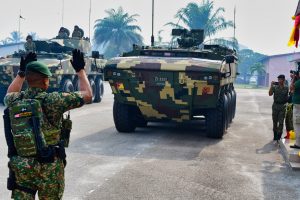
As part of the demonstration, the unit’s various Kenderaan Jenis A (Type A Vehicles – armoured) were displayed from the Adnan, MIFV and the Gempita. Also taking part were the various vehicles supporting the brigade from its tank carriers to mobile signals units.
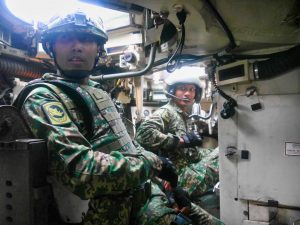
A Volvo heavy recovery vehicle from 1 Workshop was also displayed. These are the two Volvos bought as part of the Gempita project.
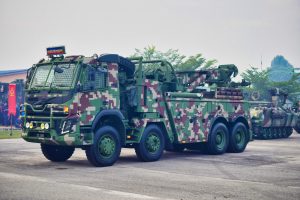
As I arrived late for the event I missed some of the demonstrations held – Future Soldier System platoon and sniper system – but as it was held in on the parade grounds, I guess I did not really missed too much. The various KJA also took turns to demonstrate their capabilities from the Baktar Shikan equipped Adnans to the Ingwe armed Gempitas. Again as the demonstration was held on the parade ground, no ammo -live or training were expanded.
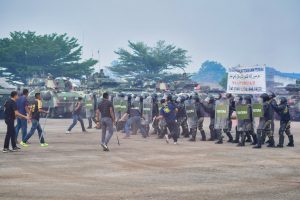
A company from 7 RRD also demonstrated their capabilities to respond to crowd control and riots. The unit if you remember is designated as the Army ready battalion. For riot control, the soldiers were equipped with the proper equipment though with Adnans supporting them it would be really intimidating for any possible rioters.
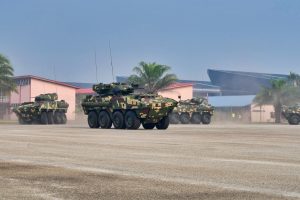
The last demonstration held for the day was a troop of Adnans and Gempitas, separately, showing their combat formation for the GOC. For more pictures check out the slides below
— Malaysian Defence
If you like this post, buy me an espresso. Paypal Payment


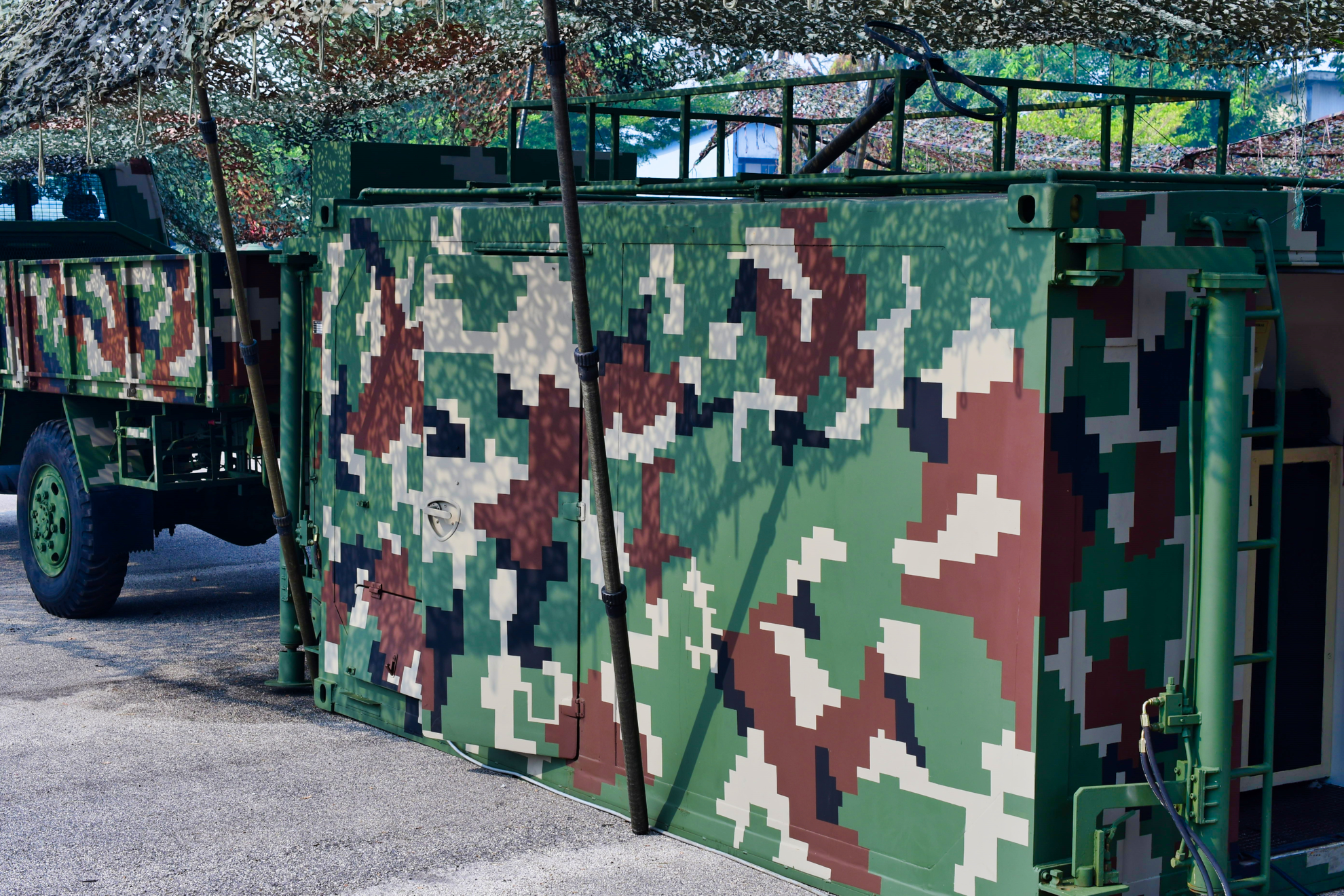
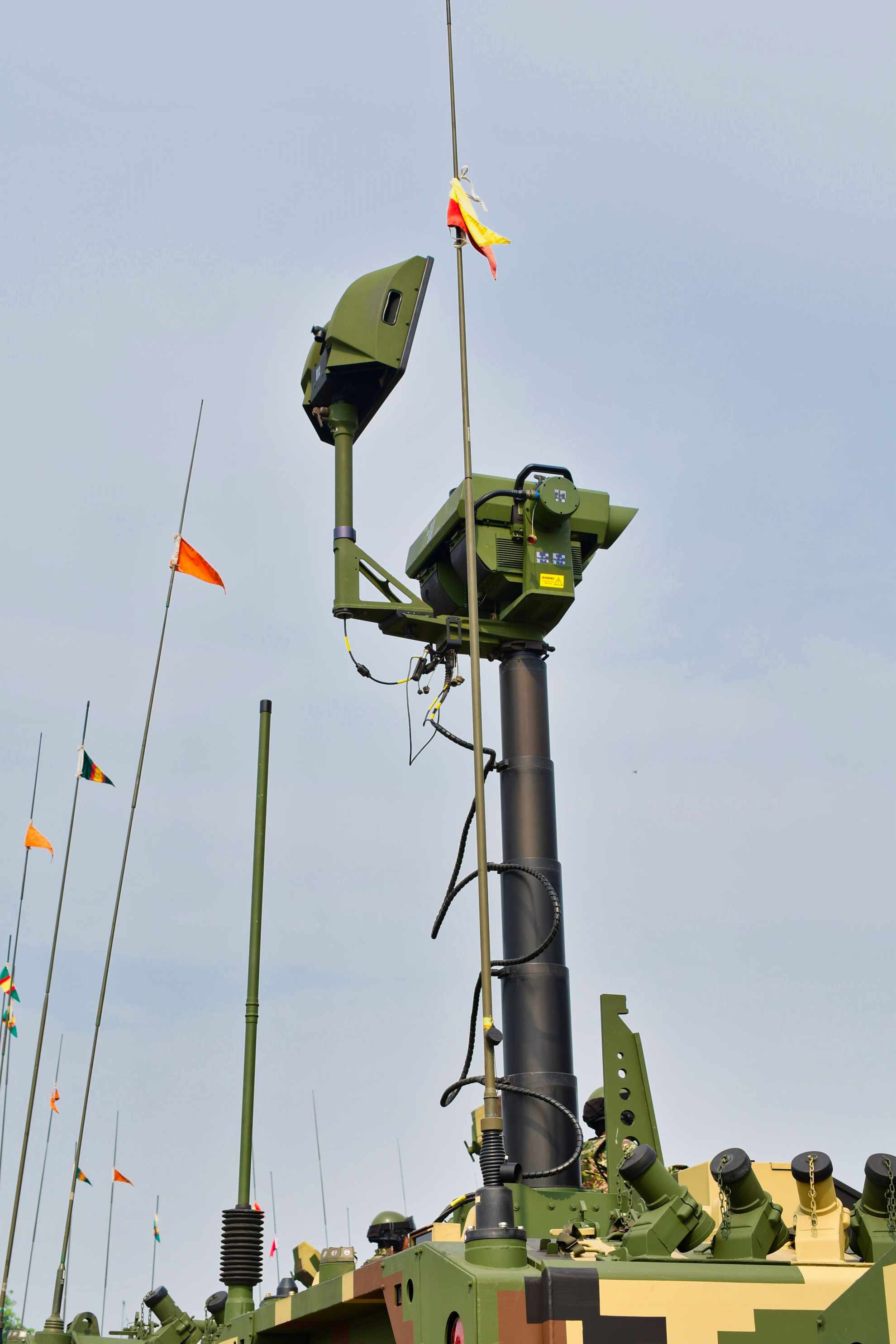
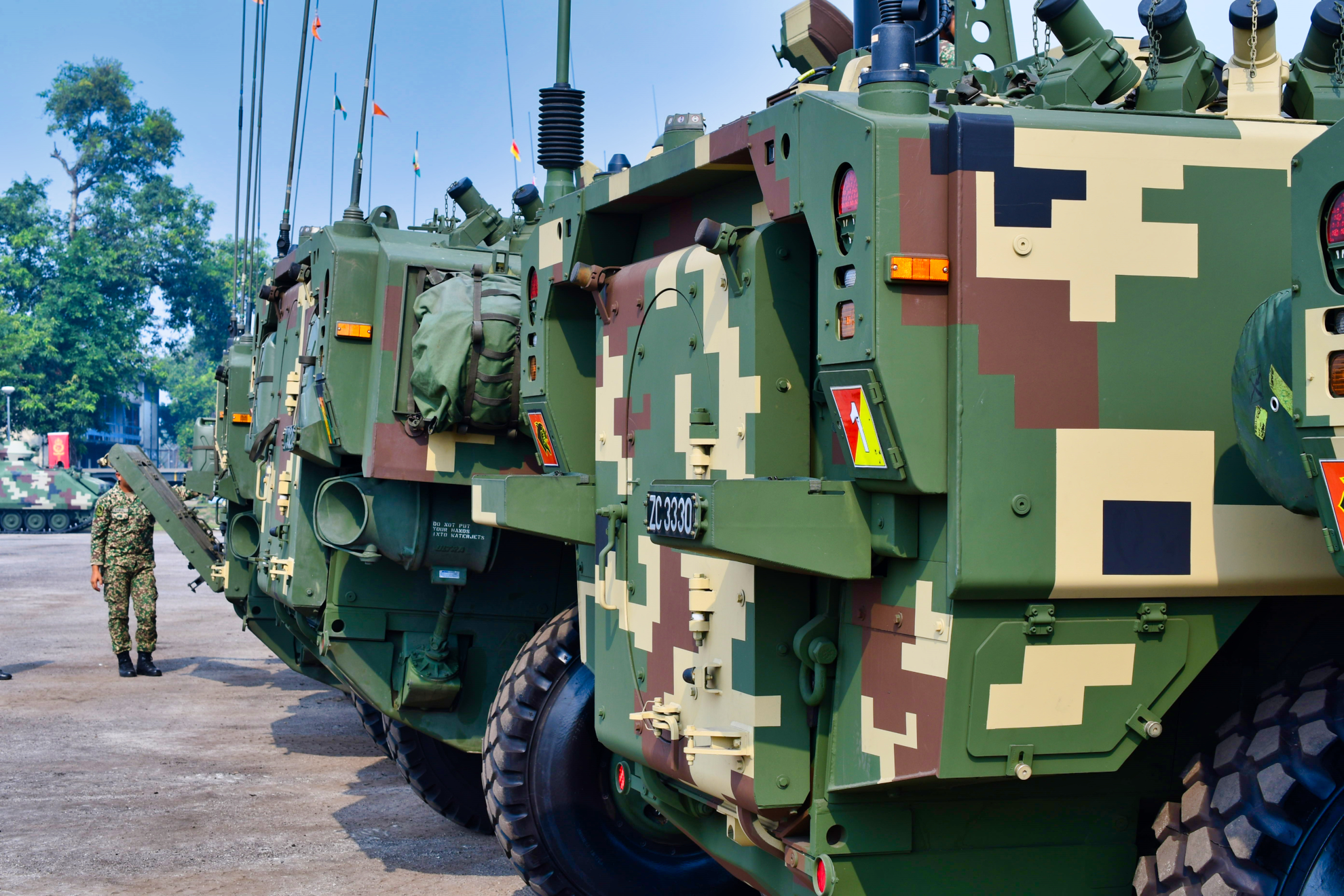
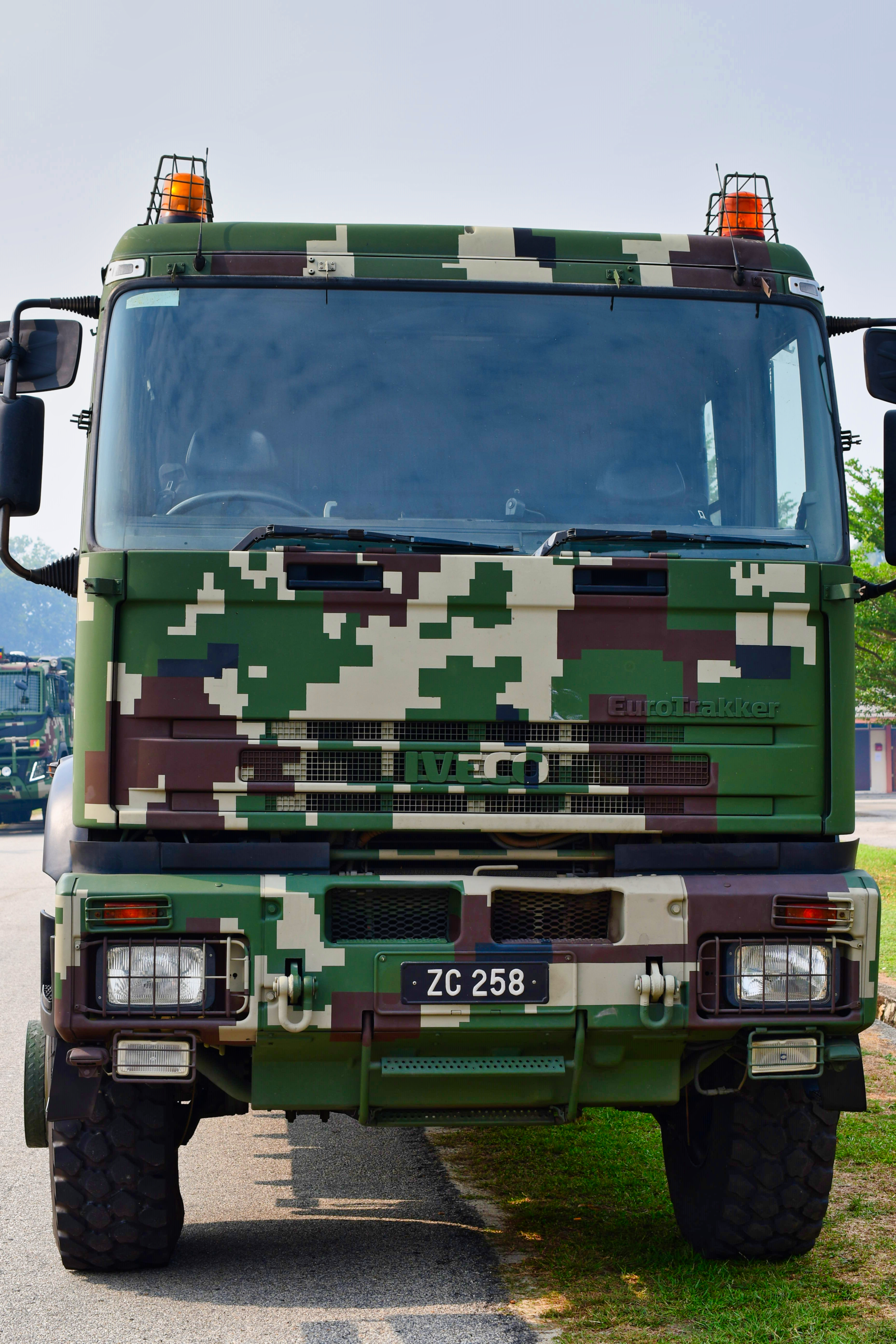
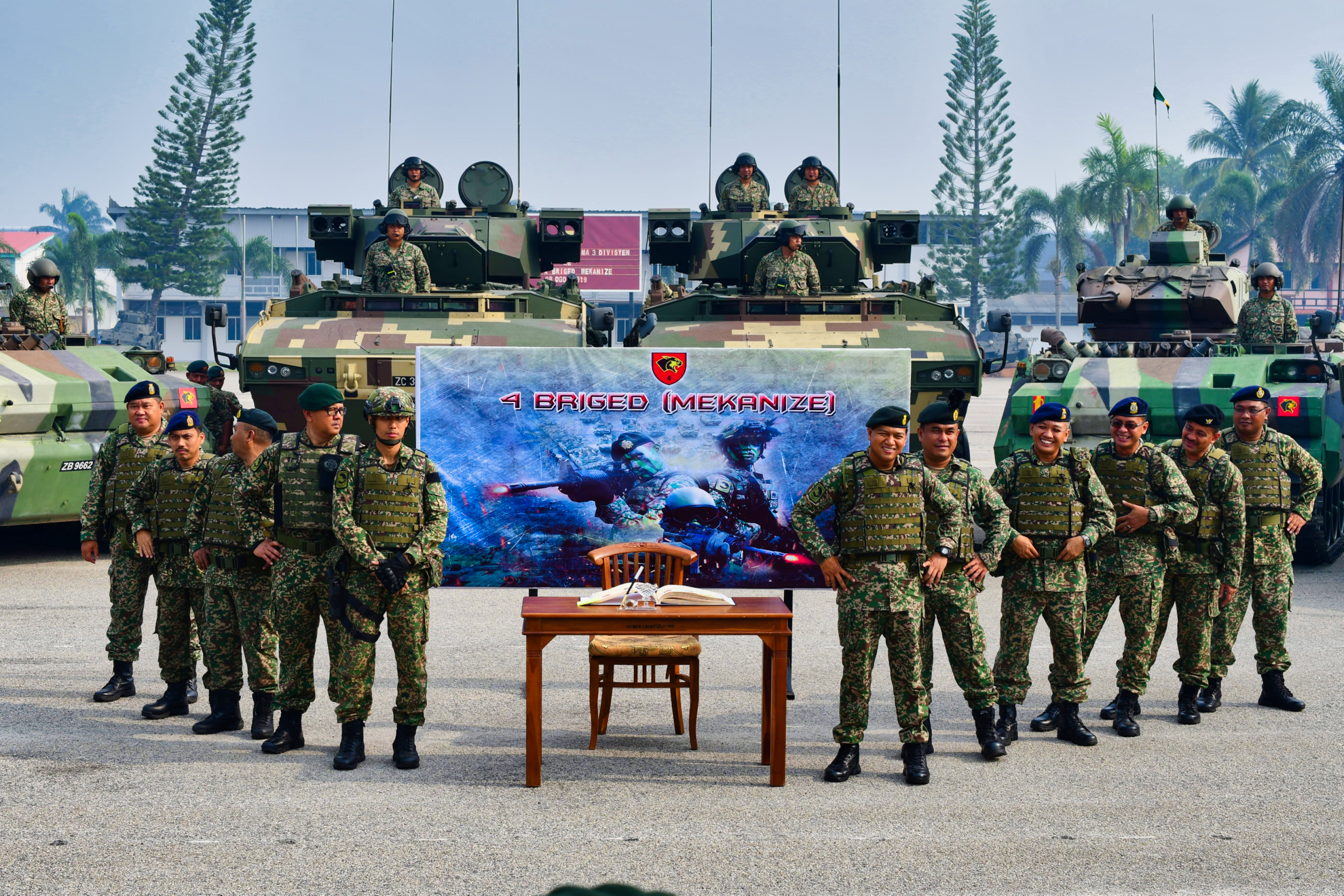
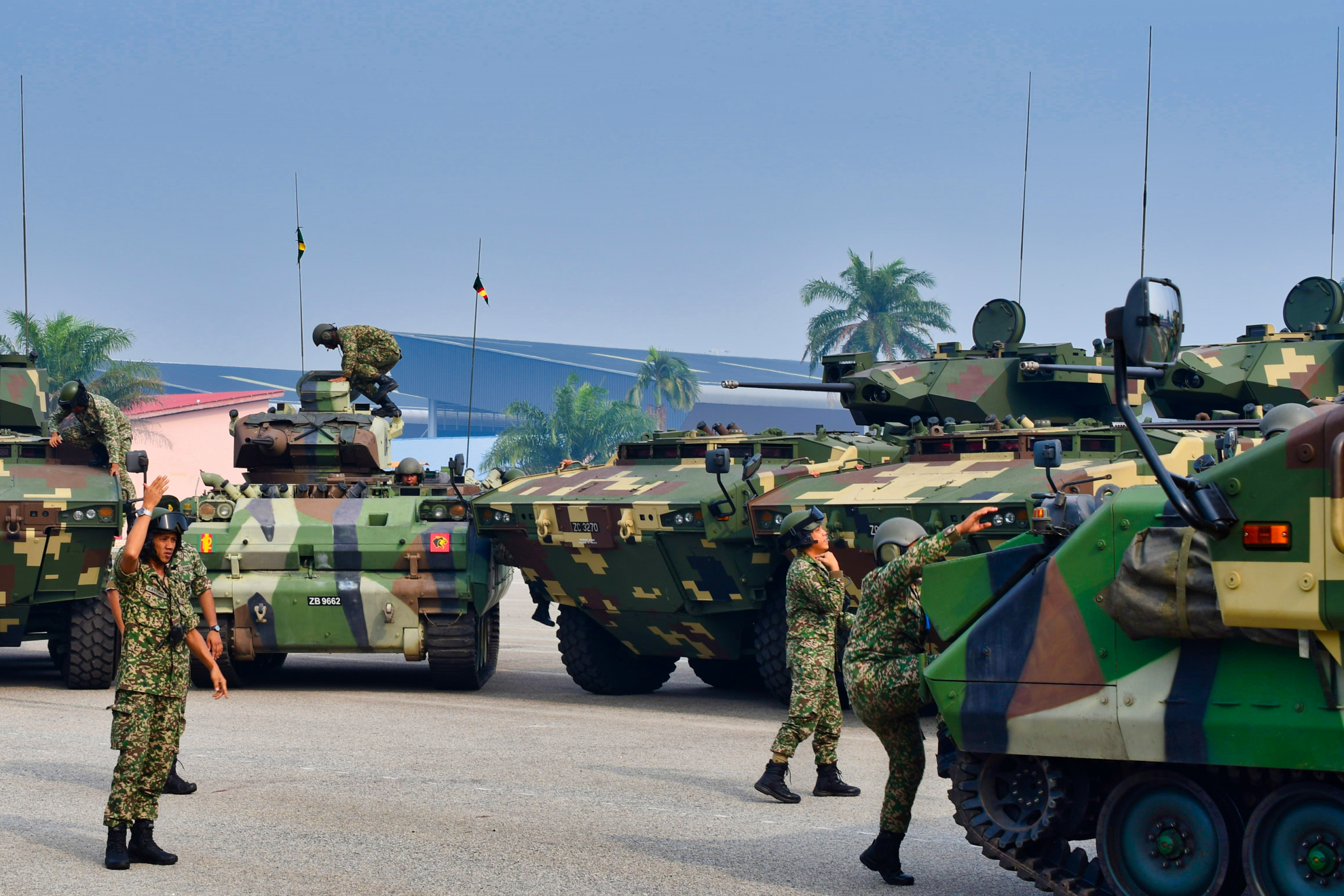
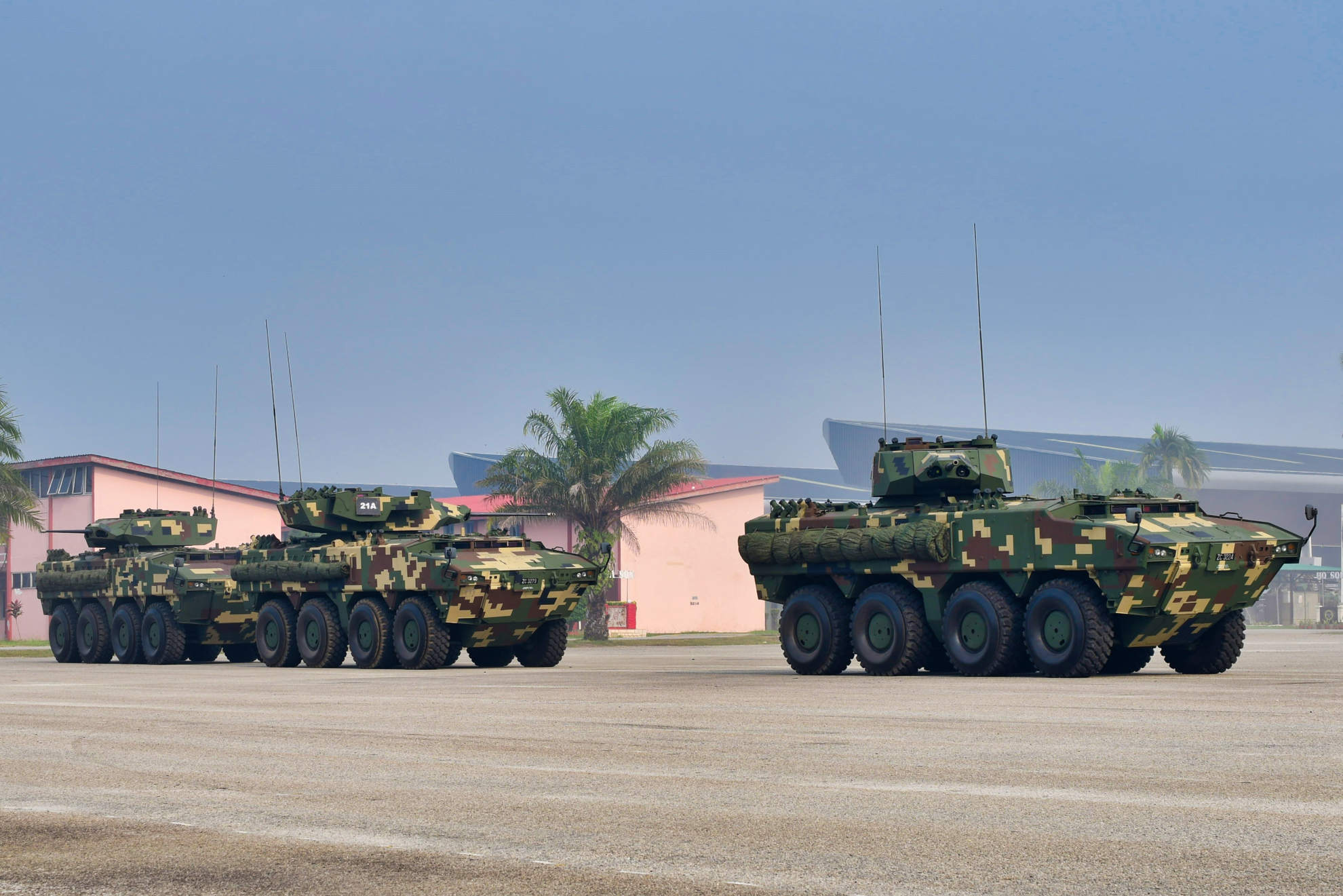


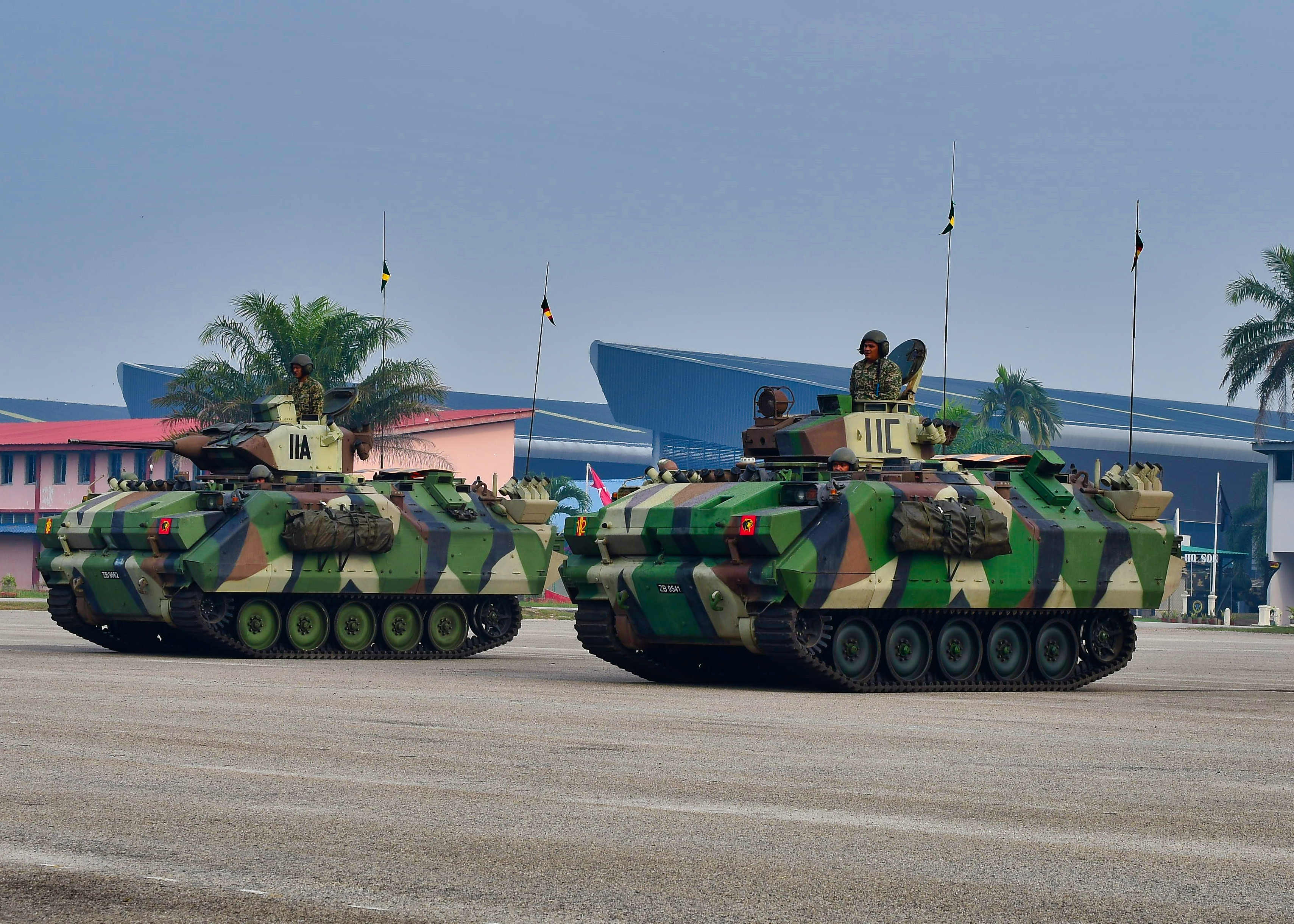
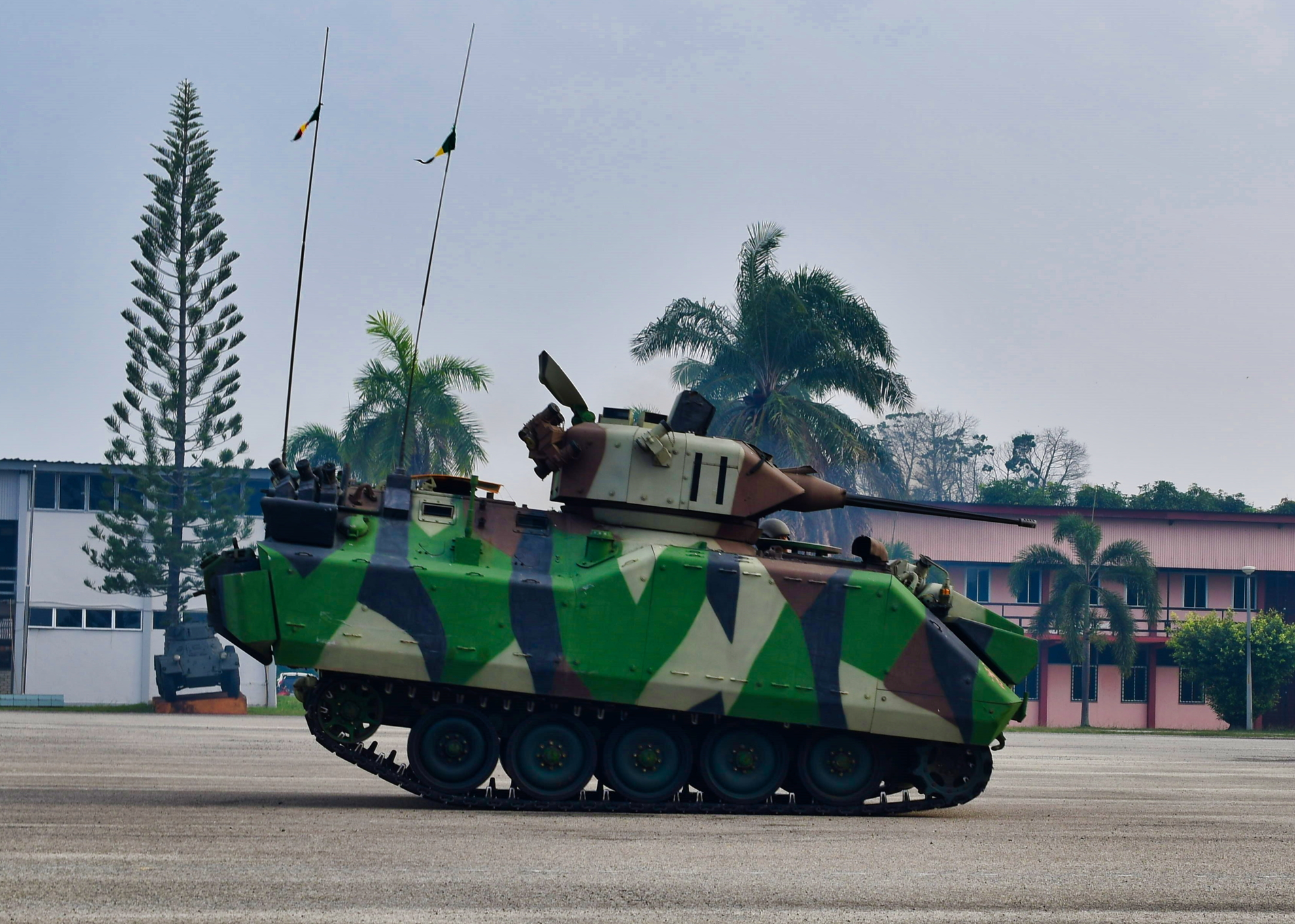
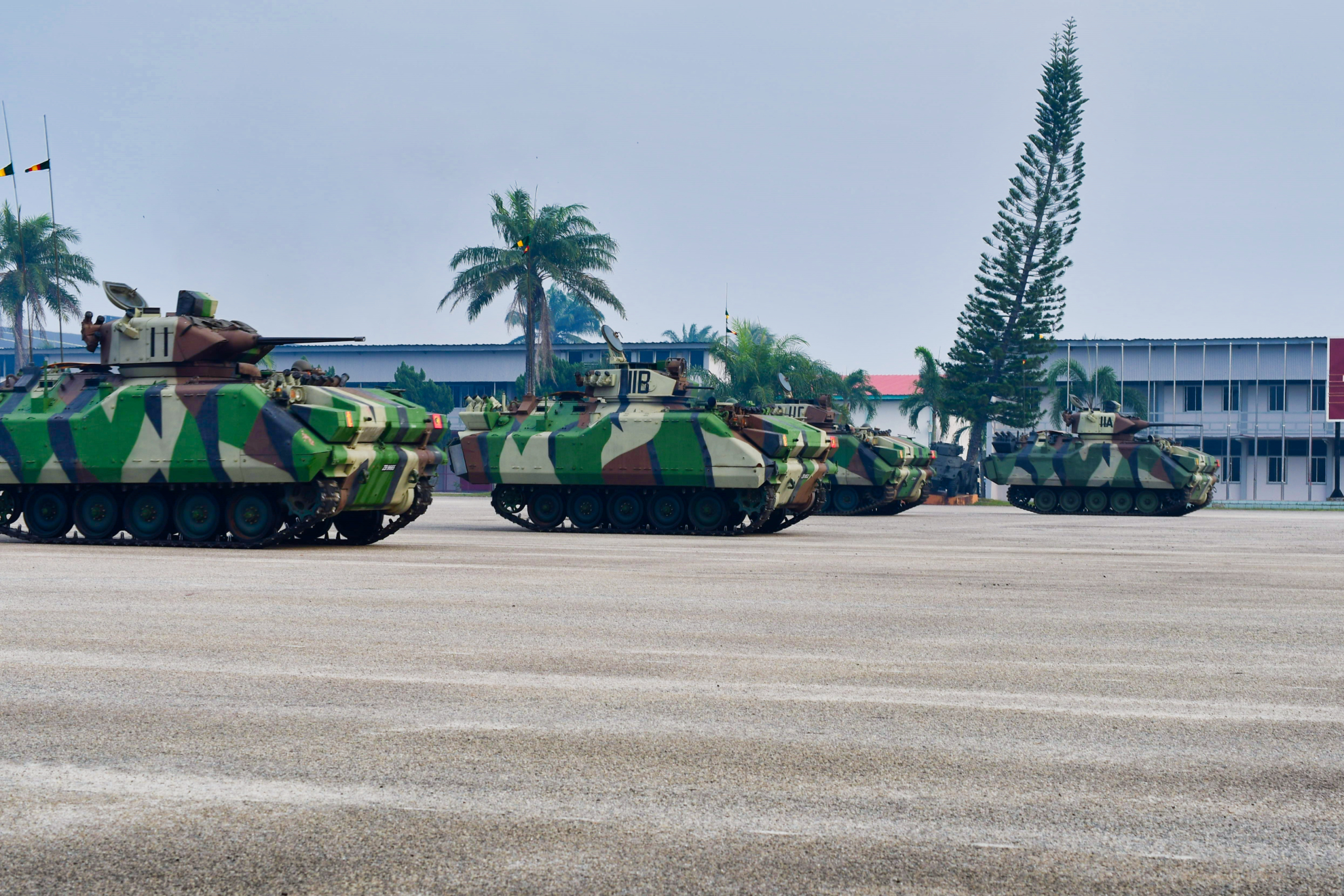
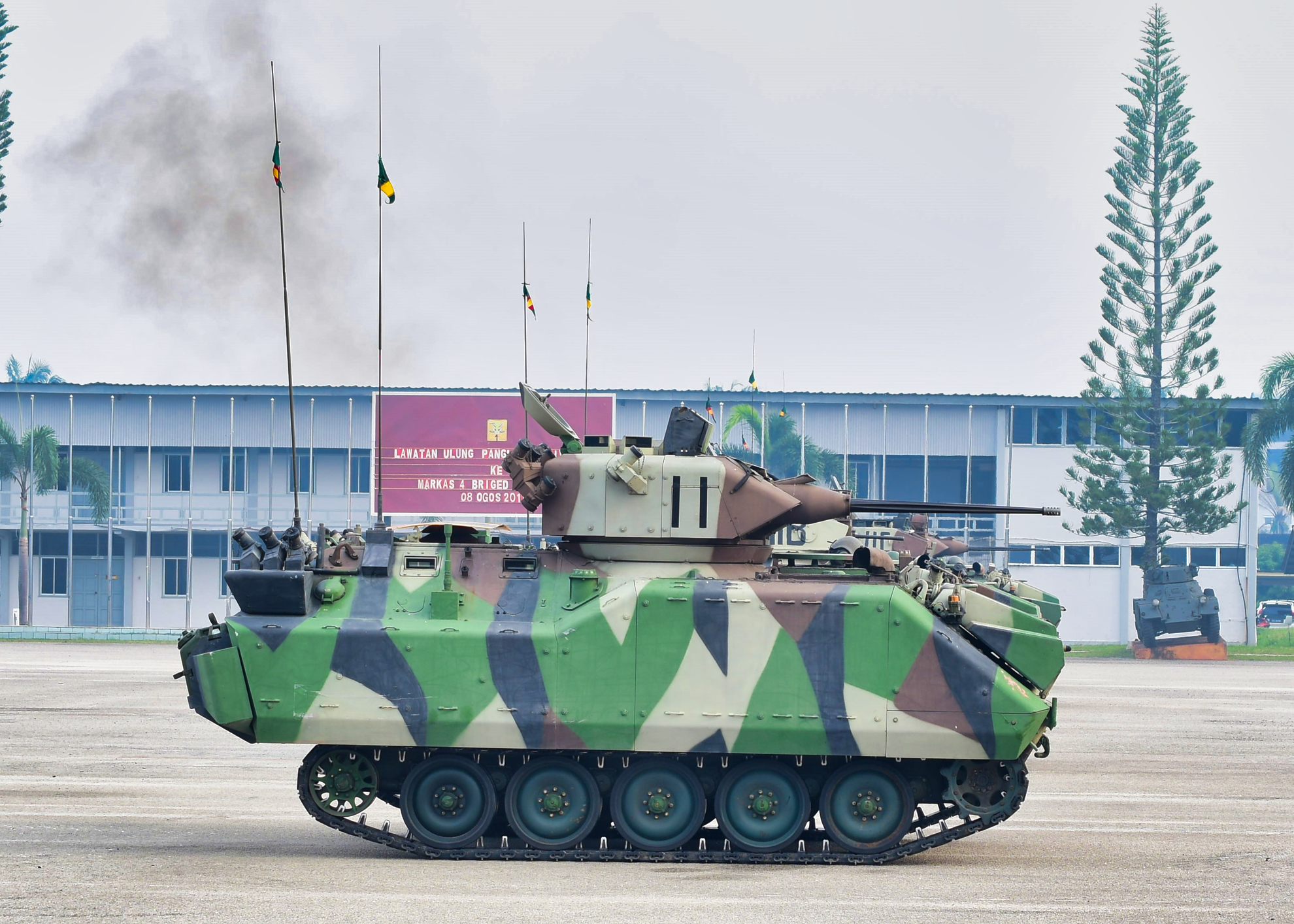

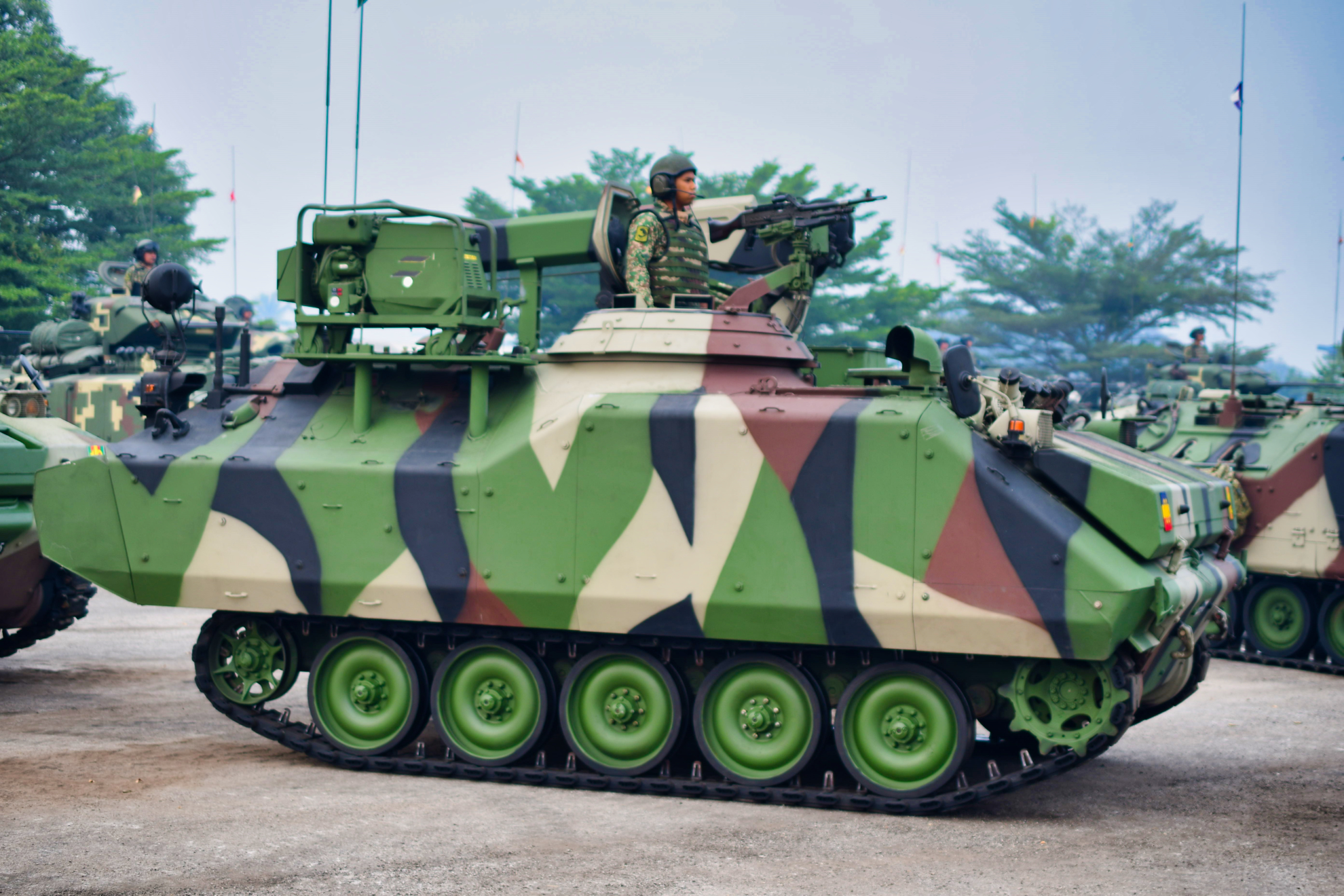
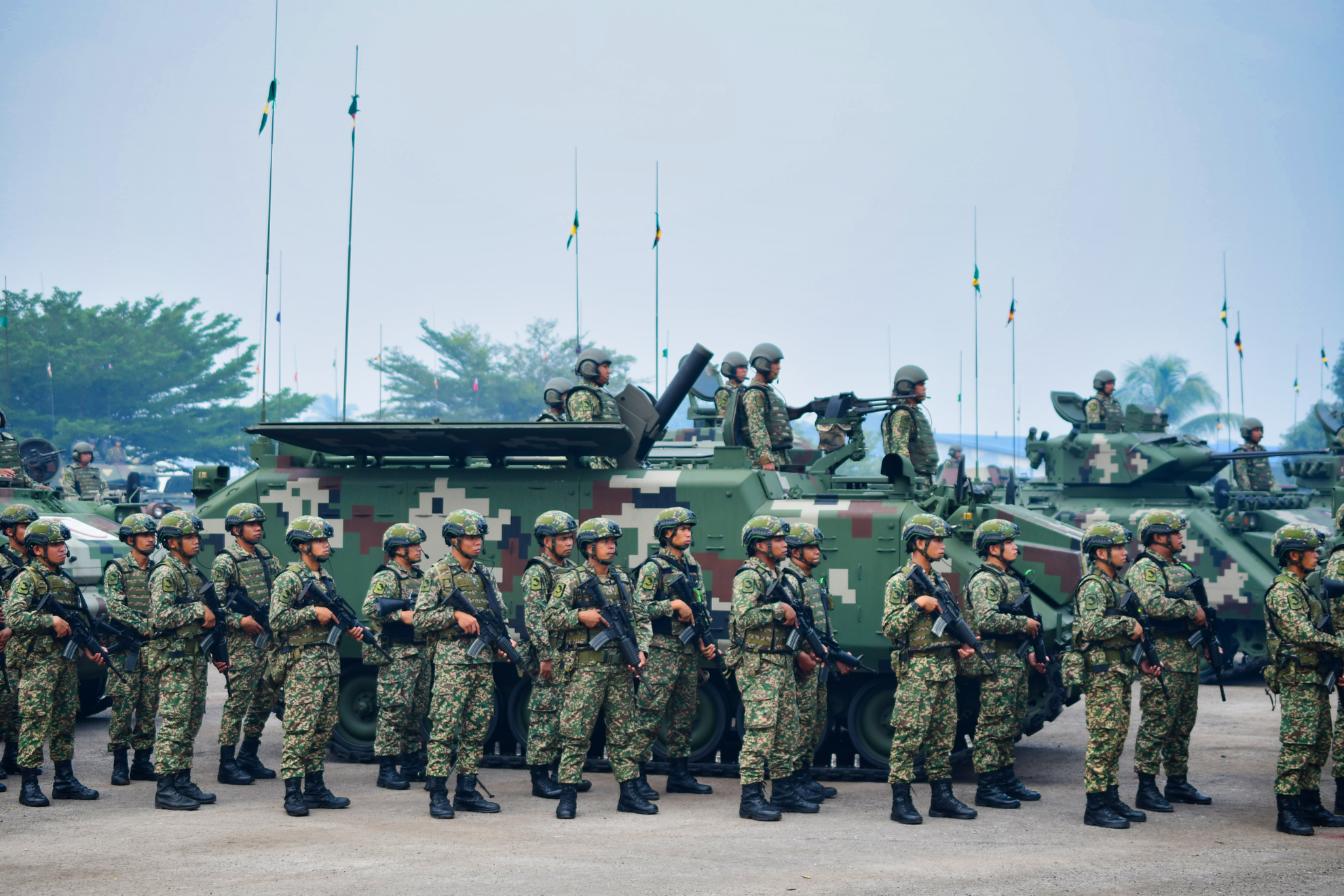
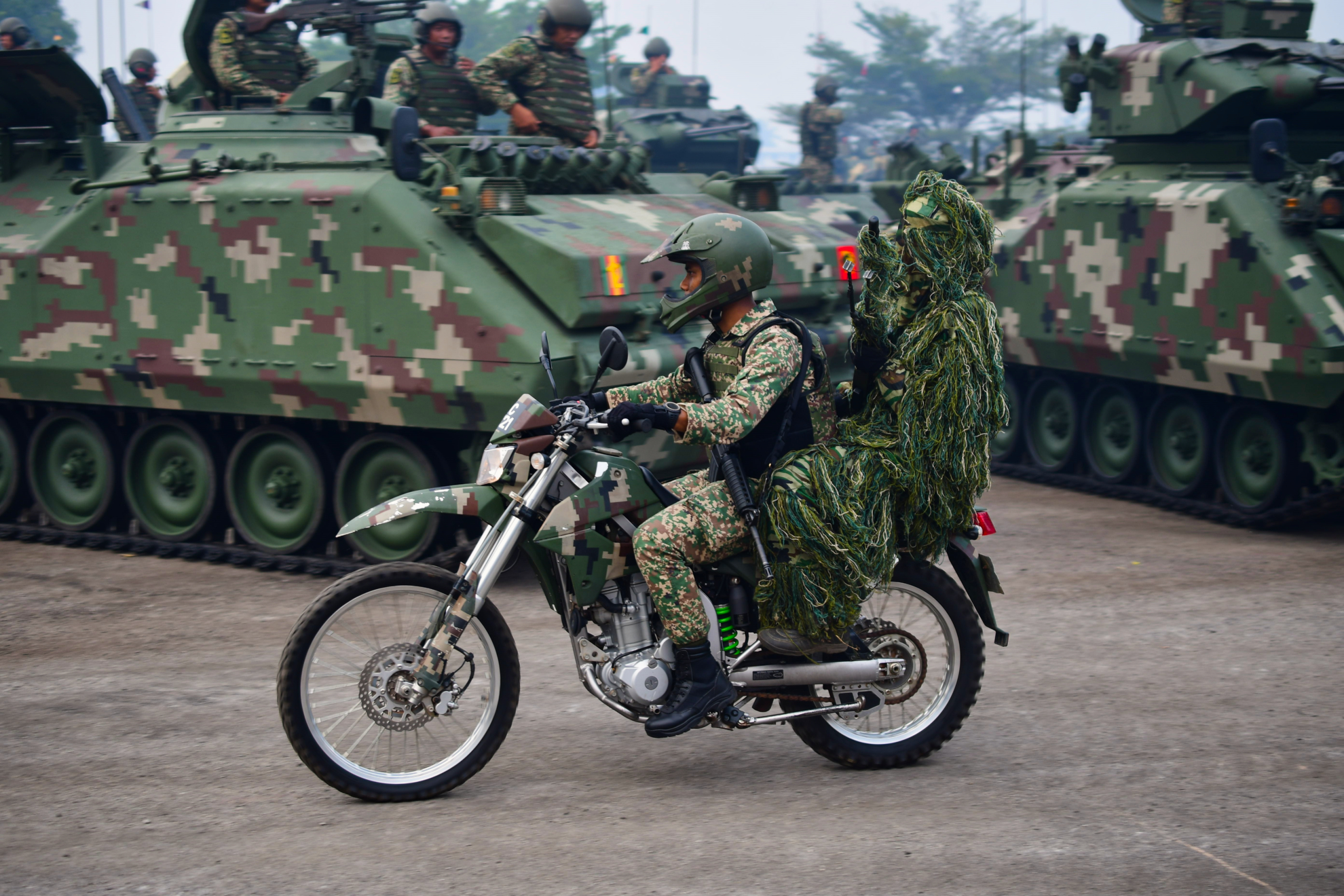
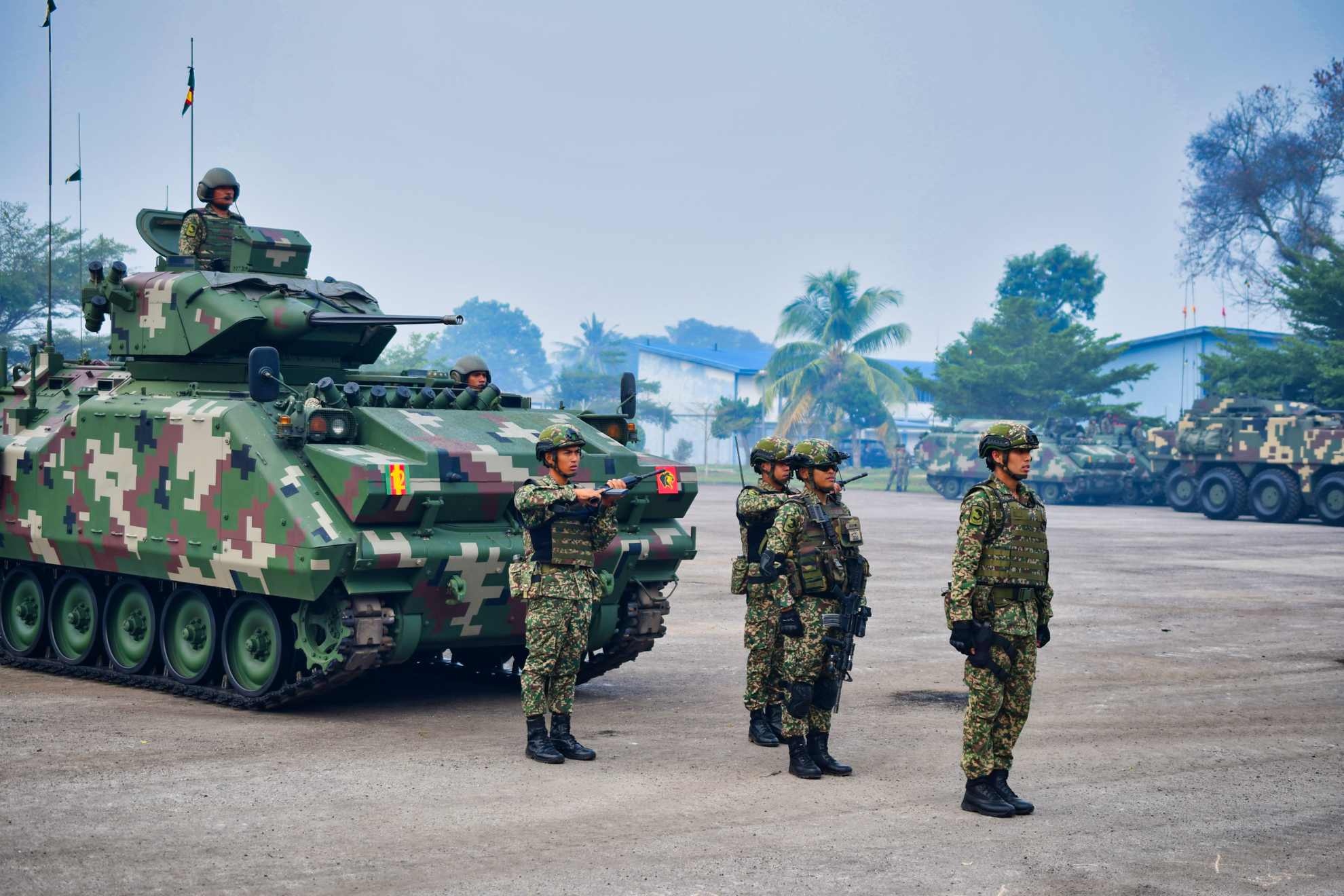
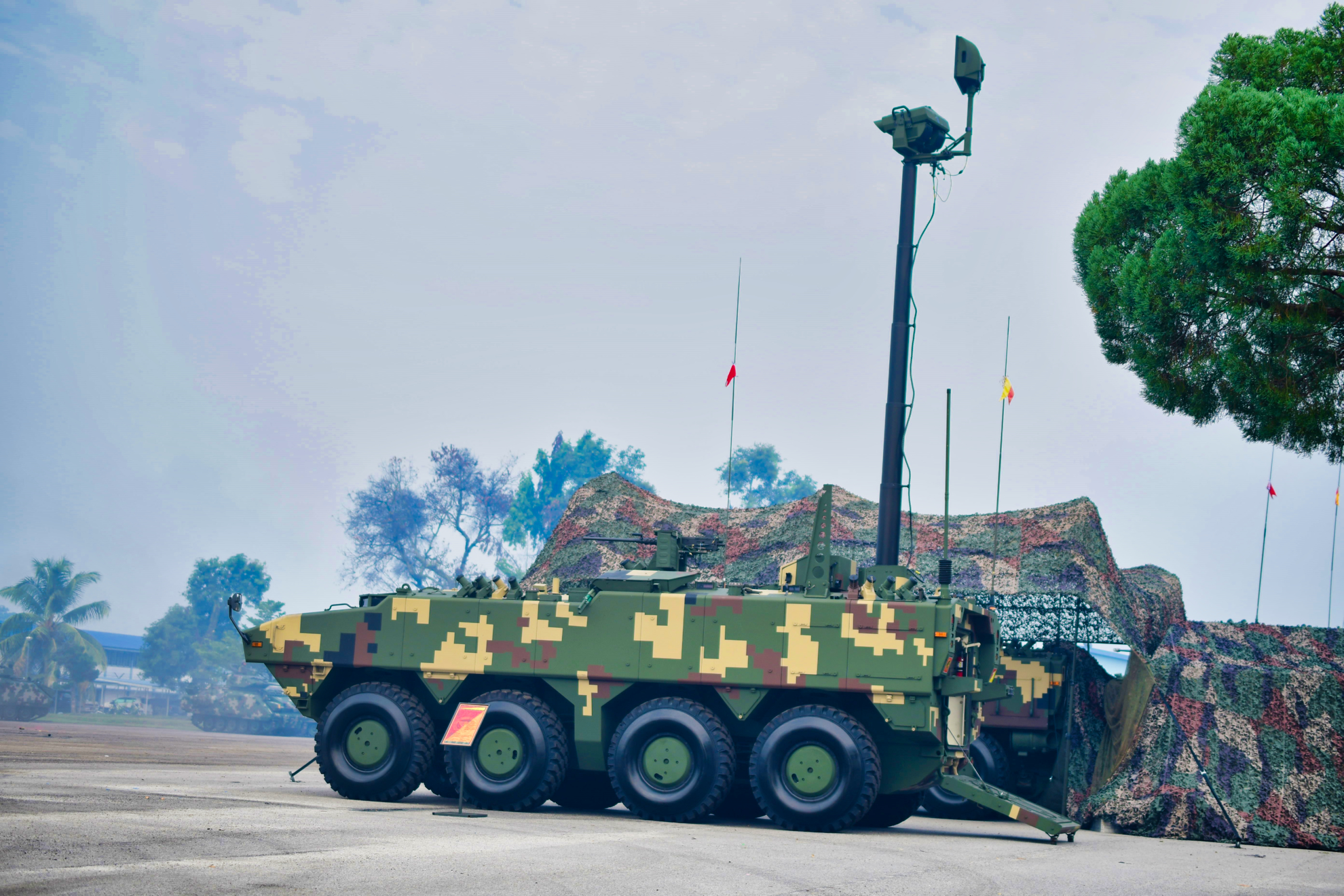
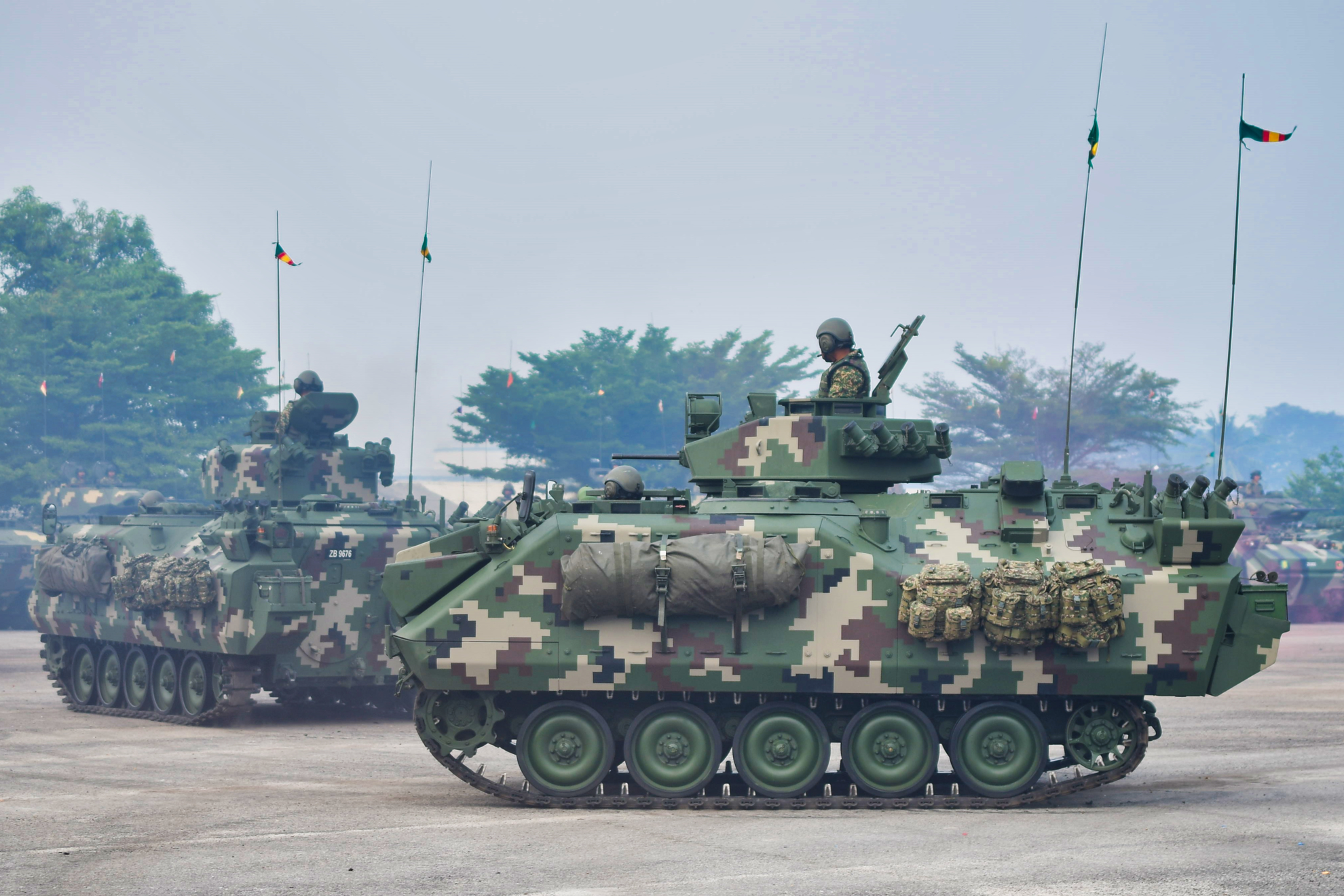

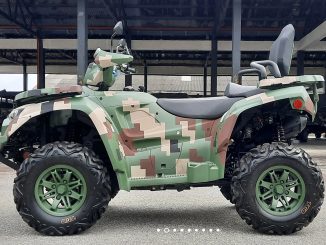
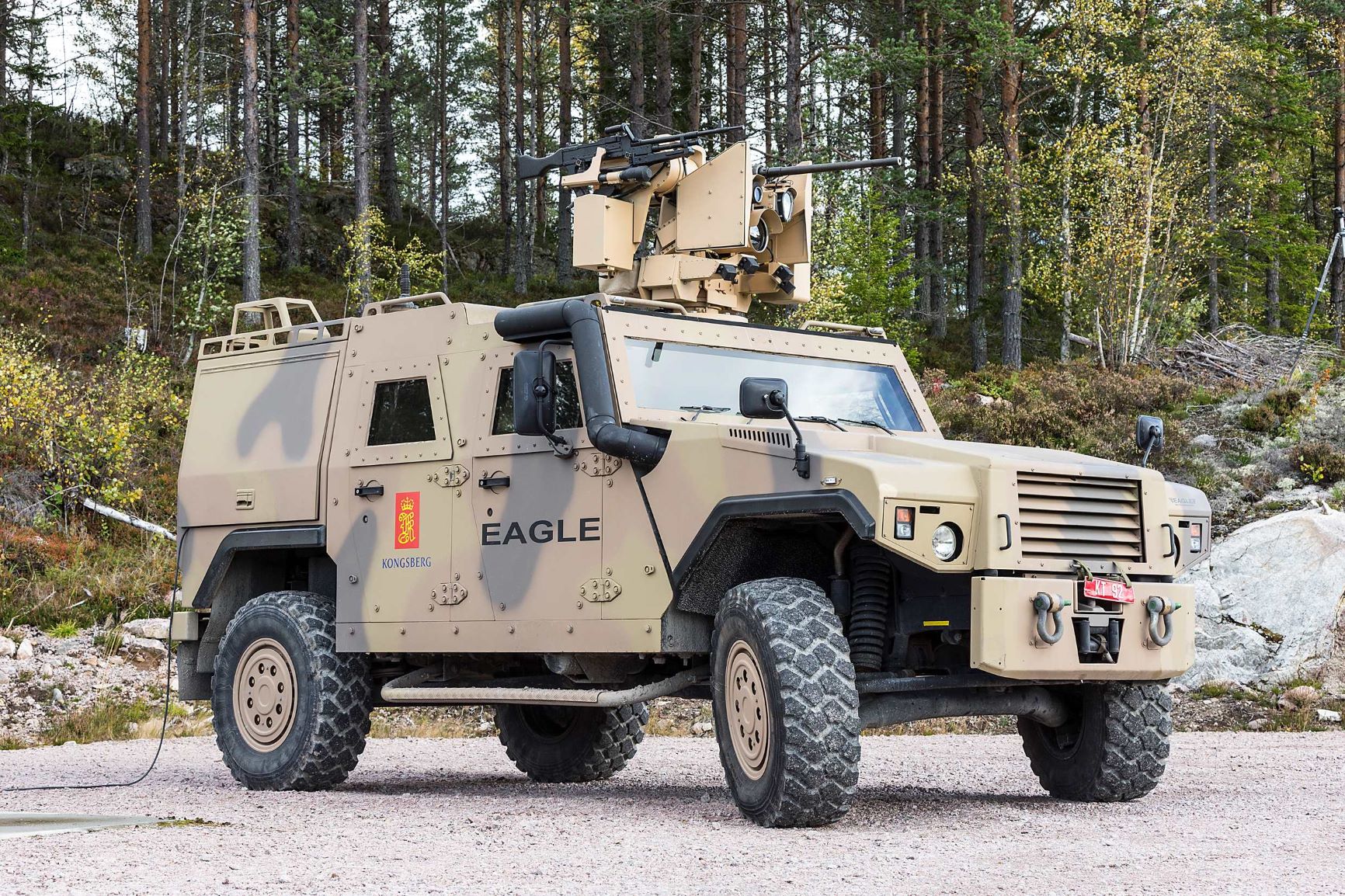
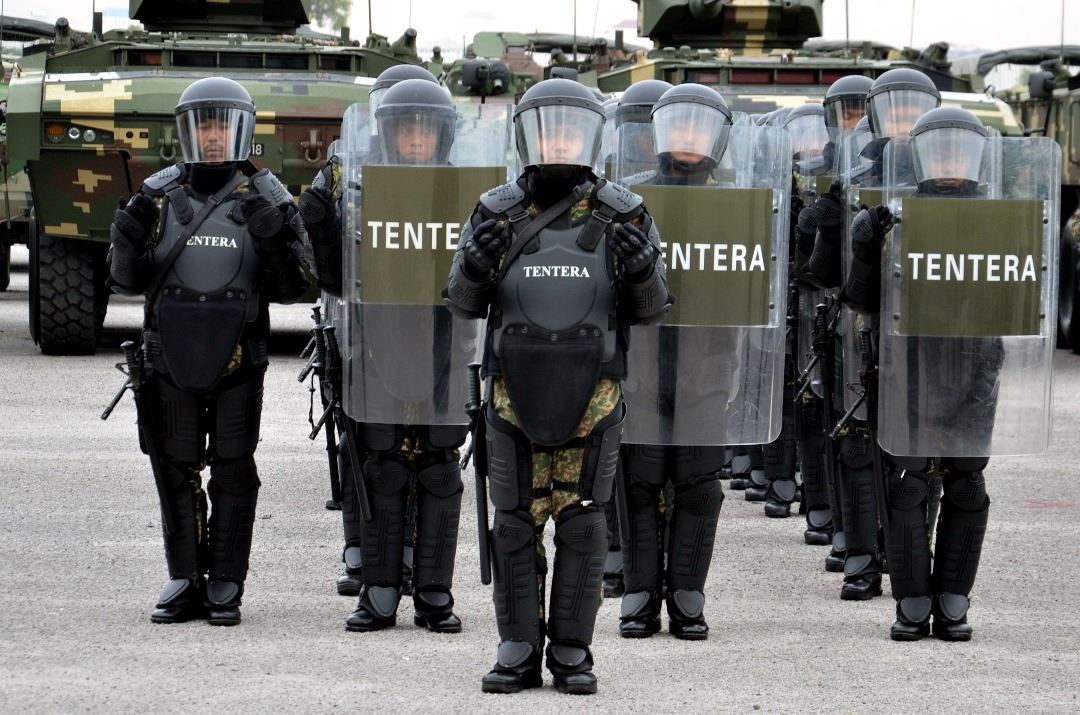
Right now i believe only 2 units operating gempita in 4th brigade. They are 1 armor and 19 RAMD.
12 RAMD, 14RAMD and 7 RRD are equipped with Adnan/MIFV (plus some others in 11 armor and armor sqn para)
Any future plans announced for 4th brigade and 3rd division? Any news of converting 1st brigade into armoured brigade?
I am for the 4th brigade to be a fully wheeled formation with gempitas (that means 2 more infantry battalions worth of gempita need to be ordered). All the Adnan/MIFV moved to 1st brigade to from a fully tracked formation (with 2 battalions of MBT plus 2 battalions of mechanised tracked infantry)
I also think that we need more of the likes of the volvo HRV. Singapore has bought 700 MAN HRV with armoured cabins. I think we should have at least 50-100 of them.
mr marhalim, why the pic in your post nowadays cant be click??used to be able to click…
Reply
The application did not allow it nowdays no idea why
Nothing being fired, how to show Capability? So just a parade of various vehicles ala Merdeka Day? A dress rehearsal for Merdeka parade?
how i wish there was an announcement of MBT and Gempita 2nd batch….but i wonder, which MBT would the army choose for the 2nd batch? would be still the PT91 or something newer perhaps?
It’s a demo not actual exercise.
“Nothing being fired, how to show Capability? So just a parade of various vehicles ala Merdeka Day? A dress rehearsal for Merdeka parade?”
What rubbish. You can fire all you want at Asahan and it won’t be a “show of capability.”
You’ll show a lot more capability and credibility if you held a challenging enough exercise, despite not having fired a single shot.
Joe,
It is basically just a grand welcoming party for the 3rd Division commander, a repeat of spectacle shown to ministers and such plenty of times already this year. Capability can be shown by plenty of ways, from powerpoint slides up to actually attacking an adversary.
mustaffa,
We all wish for various things but as it stands there are no immediate plans to get follow on MBTs and AV-8s. Neither has the requirement been registered and and approved by MINDEF and the Ministry of Finance.
AM – “You’ll show a lot more capability and credibility if you held a challenging enough exercise, despite not having fired a single shot”
Very true. A challenging exercise in which the unit and supporting elements deploy and in which unexpected scenarios or challenges are thrown in.
“Firepower demonstrations” are just that; intended for the top brass, media, foreign military attaches and students of Haigate – it’s not an actual demonstration of true capabilities.
P.S.
mustaffa,
Politics and finances will dictate what tank we buy to replace or supplement the PT-91.
The PT-91 is based on a design first worked on in the 1960’s, a design based on a Soviet Cold War “hit avoidance” philosophy which the Russians have now dropped, is fitted with a carousel loader which is extremely vulnerable due to the placement of rounds on the turret floor and sides; is fitted with various components with a 1990’s/early 2000’s lineage and has reached the end of its growth potential.
Based on those factors: ideally a design offering better survivability. ergonomics, networking, growth potential, etc, will be selected when the time comes to get a new tank (whenever that is.
As it stands follow on MBTs and AV-8s are paper requirements.
@AM
“You’ll show a lot more capability and credibility if you held a challenging enough exercise”
Its misleading to call it a “capability demonstration”. More like “asset display” is the right term to use. As you mentioned, some capability can be shown at Asahan. Better than this.
@mustaffa
Is there even a need to get more MBTs? Maybe at East Malaysia if Indon really goes thru with relocating their capital to Kalimantan and decides to defend it with their MBTs, but that idea sounds so implausible the ministers would rather relocate to Bali instead.
I am someone who thinks that follow on AV-8s should be ordered to maximise the value of all the money spent on ToT and all the manufacturing tools and facilities for the 1st batch.
As for MBTs. I am from a school of thought that thinks more PT-91Ms (basically just another battalion, fr a total of 2) with added APS would be better than nothing, or even medium tanks. In malaysian context, tanks are used primarily as support to the infantry, unlike in europe or middle east where massive tank on tank skirmish happens.
Anyway lets wait a few more weeks to see what is the contents of the defence white paper, and talk about the future based on that.
@ joe
Governments dont plan just by weeks or months like an average joe.
They are planning for 10-50 years in the future.
Even if you look at economic forecasts for 2030, which is just 11 years from now, most analysts predict that indonesian economy will be in the top 5 of the world, with a gdp of USD10 trillion.
http://themalaysianreserve.com/wp-content/uploads/2019/01/p20s2-graph-1024×835.png
To take that into perspctive, malaysia gdp forecast for 2030 is USD1 trillion.
Indonesia needs a new capital. It dreams to have something like washington dc or putrajaya. It needs a new capital to be far from volcanoes and earthquakes. It will have the required money to build a new capital. It will also have the required money to transform its military to be one of the best in south east asia by 2030. With 10x larger economy than malaysia in 2030, it will become the major power in south east asia. Something we must plan for the eventuality.
@…
Worldwide prices and MYR/USD has increased to the poinlt that I dont think we can expect a cheaper 2nd batch Gempita in real currency terms.
I don’t foresee Indonesia meeting that GDP target IMO.
Reply
What he is trying to say is since we already paid for the license and facilities it should be cheaper than the second batch though I agree the current exchange rates could also be a significant impact on the overall price
.., – “In malaysian context, tanks are used primarily as support to the infantry, unlike in europe or middle east where massive tank on tank skirmish happens“
Tanks should never be used primarily for infantry support; that’s a misuse of their potential, as has been clearly proven in the past. Also whether or not infantry takes the lead role depends primarily on the type of terrain : restricted or otherwise? Tanks should always be used as part of combined arms formations; to deliver mobile firepower; whether on the offensive or defensive. Which is precisely why we bought MBT in the very first place : to form part of a combined arms division able to fight a war of manoeuvre.
Irrespective of whether our terrain precludes the possibility “massive tank on tank skirmish”; this in no way at all does away with the fact that tanks form a vital element of combined arms formations and that they can be operated effectively. The only difference – unlike in the Middle East or Europe – is that how they deploy tactically will differ.
Whether it’s a “massive skirmish” (engagement is actually a better term) or at company or battalion or troop level; the key facts remain that the increasing urbanisation that has taken place has made our terrain more conducive for their employment and that neighbouring armies also operate tanks. If they felt that terrain was a manly prohibiting factor they wouldn’t have gotten tanks.
Whether it was with the Australians in Vietnam, the Yanks with their “Thunder Runs” in Iraq (moving on highways and “boxed” in by high rise structures), British armour in the jungles of Burma or Singaporean Leos (which plan exclusively to operate in our terrain – in urban or semi urban areas); with proper planning and support elements; there are few places where tanks can’t operate effectively.
… – “or even medium tanks”
First we have to ask why do armies go for “medium tanks” – because they can’t afford a MBT or because they desire a tank that can be more easily deployed by air and because they foresee such tanks operating in areas with a poor road infrastructure (the Indians need such a vehicle to be used in the north of the country – in mountainous areas with little roads and little space to manuever).
Those are the reasons why the Yanks and Indians are looking at medium tanks and why the Chinese (to operate on the Tibetan plateau and to be lifted into Taiwan) have them. Ultimately, having a medium tank is fine as long at it only meets other medium tanks and not MBTs. In our context, if we indeed need a medium tank and that tank is mainly for infantry support
(you seem fixated on the idea that tanks in our context should be restricted to infantry support)
and to deliver firepower; can’t those roles be performed by the 25mm/30mm/ Ingwe equipped Adnans and AV-8s we already have?
One can argue that a medium tank with a 105mm gun (useless against a MBT and superfluous against IFVs when friendly equipped IFVs armed with auto cannons are available) will be useful for engaging structures/bunkers (BTW the main reason behind us getting the Cockerills) but shoulder fired weapons and ATGWs can be used for this role.
@ chua
2nd batch of gempita should be just the cost of the vehicle itself. All the licenses, tot, r&d, facilities, manpower training has been paid for in the 1st batch. Based on what oman paid for their pars (which also includes r&d for their specific versions), each new batch of gempita should cost not more than usd3 million each. 2nd batch of gempita IMO would consist mostly of IFV25 variants, to equip additional mechanized battalions.
As on indonesia, if they can achive the same percentage of middle income citizens as malaysia is right now, they can achieve that GDP target. Even if it is half of the target, it is still 5x bigger than malaysian target for 2030.
@ azlan
Yes combined arms is a better discription of what i meant (and i am not fixated on tanks for infantry support). On what mbt to get, lets just agree to disagree as we have totally different views on this.
Marhalim,
The question is how much local content did we have for the first batch and will the level of local content increase when or if we produce a 2nd batch of AV-8s?
Another factor is inflation. Most of the raw materials used will still have to be sourced from the Turks? How much will prices go up?
There’s an article about the Indian MKIs out there and it seems that some 60 percent of the raw materials components are still sourced from Russia. Not only that but a MKI bought off the shelf costs around USD40 million (ironic that I’m discussing prices which I tend not to do) but one’s produced in India cost around USD70 million (despite the Indians having economics of scale).
On whether we should go for follow on MBTs or AV-8s: people have their preferences but I suspect that if given a choice the army would go for MBTs. Of having more MBTs would also lead to the need for more IFVs to operate alongside those MBTs. Similarly, follow on AV-8s will also need to operate alongside MBTs. Having formations equipped with just AV-8s are great if no enemy MBTs are encountered and enemy units faced only operate IFVs but if enemy MBTs are encountered then things get somewhat complicated ….
If there is a choice between more gempitas or mbts (costing the same amount), i would choose for more gempitas.
The 4th mech formation, IMO needs to be a fully wheeled one to maximise its operational potential. I forsee 4th mech consisting of 3 mech battalion on mainly IFV25 gempitas and 1 cavalry regiment of AFV30 and LCT30.
My preference to prioritize more gempitas rather than new mbts is also why i would rather add more pt-91m (1 more regiment of used and upgraded ones) instead. It is partly so that we can afford to pay for more gempitas.
@…
“They are planning for 10-50 years in the future.”
If you look at Indonesia, they have said a lot and planned a lot but what came out either differs greatly from their initial plan or it never took off. So I’m not holding my breath on this.
As for getting medium tanks? No. Even if the need arises, better to put Stryker 105mm gun turret on AV-8 instead of another platform.
Interesting discussion. Many people think that tanks cannot operate in the mountainous terrain in Peninsular. Tanks should only be used in fire support n that tank v tank battles are not possible.
Lets take a look at history. The English also thought the same. Tanks are of no use in Malaya. But the Japanese proof them wrong away n use tank supported infantry to outflank the British n not to fight pitched battles with the British in their defended lines around towns. Where they choose to fight such battles its being proven that the defences are not easily breached.
So out of the box thinking is required for tank warfare
@…
“oman paid for their pars.”
Not the same. AV-8 is an uparmoured variant of PARS, much similar to PARS 3. Oman only got the older PARS platform.
I have no personal preference as to whether we should go next go for MBTs or AV-8s as they are both intended for different things and both gave roles to play. One can also make a compelling argument as to why it’s not more AV-8s that should come next but tracked IFVs.
Apart from the need to reed to replace or augment the PT-91s with a new generation tank – incorporating various improvements over what is essentially a 1960’s designed tank based on now discarded Soviet era doctrine – is whether Bumar Laberdy will be in a position to produce PT-91s in the near future.
As to upgrades, aside from limitations based on the existing design and how willing army is willing to spend on a design with hardly any growth potential left; is the question of how much added improvements an upgrade will deliver and in the run whether the cash and effort spent is a good return of investment compared to getting a new tank.
Adding a APS sounds easy on paper but in reality it’s not easy (as has been pointed out before) – the current power supply is barely sufficient and to fit the APS and it’s components; the ERA modules and other stuff on the turret will have to be realigned (not impossible to do but nonetheless still takes time and effort). Another factor is internal turret space (something most people tend not to consider when discussing upgrades): space will have to be found for the APS’s controls and as it is; there is practically no free space in the turret.
@Azlan
What … and sometimes myself mean by “infantry support” is the concept of operations whereby small numbers of tanks operate with infantry as a situational spearhead to break through strong points or as a mobile armoured reserve to respond to enemy tanks threatening the Mech infantry who are usually the main effort.
In contrast to the massed tanks doctrine of the Fulda Gap or Middle East plains where tanks would exploit breakthroughs to drive deep into the enemy rear, supported by small numbers of Mech infantry.
In our context, given that we have small numbers of tanks and our terrain, the PT-91M would almost certainly be operating in the former role rather than employed to exploit a breakthrough at Woodlands and drive deep into Keppel…!
Re: medium tanks, there is a recent resurgent interest amongst the superpowers in what would have been called infantry assault guns in WW2 or Mobile Protected Firepower today in US parlance, as super-IFVs are taking the field in numbers, so medium tanks or basically vehicles with the armour of a tracked IFV (30mm+ proof) and a 57mm-105mm gun to give support to both tracked and wheeled mechanised infantry against these super-IFVs and bunkers.
I confess to having been blind to this latest development as well having previously expressed severe doubts on the concept here.
@Marhalim
What I worry is this
MYR/USD peaked at ~3.20 in 2011, around when the first AV8 contract was signed IINM. It’s now 4.18 or 28% increase against the USD.
Inflation in USD terms is 14% from 2011 to 2019.
The net effect of MYR devaluation (loss in our international purchasing power) and USD-denominated inflation (international rise in currency value of goods) is the product of the two, 1.14 x 1.28 = 1.45.
A Gempita today is 45% more expensive than a Gempita then.
In fact I would be surprised if this is not what we are actually paying for the latest batch, unless we had the money and foresight then to hedge prices which I highly doubt.
Hence even if hypothetically 2nd batch Gempita achieves a 45% savings in unit prices, it would still cost the same in real terms ie about Rm30 million per unit, in today’s ringgit.
Inflation and for some countries similar forex devaluation has also affected other IFV prices as well.
…. – “(and i am not fixated on tanks for infantry support)”
Fine, if you say so.
My comment was based on your comment – “tanks are used primarily as support to the infantry”.
Tanks are “primarily” used to deliver mobile firepower – defensively or otherwise – as part of combined arms formations. Yes they can be used to provide infantry support but we didn’t buy tanks to be used “primarily” for infantry support and when it’s all said and done; their “primary” role is to kill other tanks. Also, their use for infantry support depends largely on whether enemy tanks are present. IFVs can also and are utilised for infantry support; depending on the circumstances.
…. – “just agree to disagree as we have totally different views on this”
Of yes. We have “totally different views” on most things and no doubt will continue to do so.
I also have given in detail reasons why; when or if the time comes; logic dictates we move with the times, rather than falling back on a dated design that has long past its prime and has been surpassed by other tanks in protection, ergonomics, design, networking and growth potential.
Given a choice, the Armour Directorate has no absolutely no intention of getting additional
PT-91s. It has long been seeking funding to rectify several long unresolved issues relating to the running and performance of the PT-91 but nothing beyond that.
…, – “2nd batch of gempita should be just the cost of the vehicle itself”
Yes but will the bulk of the raw materials be imported or sourced locally and due to inflation, will prices go up? A lot depends on when we commence production; in 2-3 years or more?
Also everything from the turret (South African or Turkish) to the bilge pump (British), to the filtration system (British), to the thermals (?), right down to the tyres (British); will have to be sourced from abroad and paid in USD/Euros/Sterling/Rand.
@ joe
Oman pars is even more advanced and heavier armoured (no amphibious capability) than malaysian gempita. That amount is including all the R&D (total cost is put at USD513 million) needed to create the new oman pars.
@ chua
Thanks for the explaination on “infantry support”
@ azlan, chua
On gempita batch 2.
No matter what is the exchange rate, we have a benchmark cost for omani pars at USD3 million per vehicle (USD513 million overall). That cost covers the design, development, production, and delivery of a total of 172 vehicles in 13 different configurations, as well as the integrated logistics support (ILS) services to be provided during the guarantee period. Right now for future batch of gempita, there will be only cost for production and ILS services, so it is very reasonable if we can get same number of vehicle for the same cost as omani purchase. Incidentally around 170 vehicles is also the number that can be used to equip 2 mechanized battalions.
Other things to consider whether we should spend on gempita or mbt.
Currently we only have
257 gempita
267 adnan
111 MIFV
200+? condor (as plenty has been scrapped)
48 PT-91M
Right now we barely have enough to equip just 1 brigade, even that is a rojak of both wheeled and tracked IFV. We also must consider some that should also be deployed to east malaysia.
Our southern neighbour, while having about 200 Leo2s, they also have about 2500+ IFVs in service. They have around 900 bionix, 700 M113 to be replaced by hunter, 500 terrex, 400 broncos, 200 belrex, 100 peacekeeper.
IMO we should have something like
430 gempita
267 adnan
111 MIFV
450 J-LTV
450 new mrap/apc
120 PT-91M+
To be able to equip
– 1 mechanized brigade of gempita (4mech inf, 1 cavalry)
– 1 armoured brigade (2 adnan, 2 pt91m)
– 1 motorized brigade (3 inf on mrap/apc)
– 2 motorized battalion, 1 each in sabah and sarawak (on mrap/apc)
– 3 cavalry regiments, 1 each in north peninsular, sabah and sarawak (on gempita and J-LTV)
– Forward pre-positioned stocks of PT-91M, adnan and gempita in sabah and sarawak.
What would this cost and how long would it take to achive this?
It would take 2 RMK to 2030. Cost:
– usd500 mil for 170 gempita
– usd200 mil for 80 used upgraded PT-91M
– usd200 mil for 450 J-LTV
– usd300 mil for 450 MRAP/APC
Is it affordable? I think so. Can we really get a new MBT for that kind of money? Probably yes but is it better than getting all the above?
” Given a choice, the Armour Directorate has no absolutely no intention of getting additional
PT-91s ”
http://defence-blog.com/army/malaysia-is-looking-for-new-tanks.html
The formation of the second Malaysian armored regiment will require the purchase of additional tanks party primary. Gen. Raja Affandi admitted that the land forces command seriously considering the purchase of another PT-91M tanks Pendekar.
Chua – “whereby small numbers of tanks operate with infantry as a situational spearhead to break through strong points or as a mobile armoured reserve to respond to enemy tanks threatening the Mech infantry”
This is what I wrote in a previous thread – “whether engagements will be “large” or otherwise; the fact still remains that there is always the possibility of tank engagements, irrespective of the scale or the intensity”
Whether it’s in Europe or Africa or here; the overall concept of use remains unchanged. In our context MBTs will still perform exploitation or breakthroughs at an operational level; albeit on a smaller scale.
Chua – “massed tanks doctrine of the Fulda Gap or Middle East plains where tanks would exploit breakthroughs to drive deep into the enemy rear, supported by small numbers of Mech infantry”
Chua – “In our context, given that we have small numbers of tanks and our terrain, the PT-91M would almost certainly be operating in the former role rather than employed to exploit a breakthrough at Woodlands and drive deep into Keppel”
You guys keep falling back on the word “mass”. Define “mass” and how it relates to us. Whether it’s at regiment, corps, army group or even squadron level; the concept of the use of MBTs remains unchanged – whether offensively or defensively. It’s the scale and tempo (due to terrain) that has changed; nothing else.
In our context, irrespective of the fact that we only have a regiment’s with of MBTs; how they will be used depends largely on what the enemy is doing….. Whether it’s to seal off a local penetration by a squadron of enemy MBTs on the fringe of an estate in the Tawau area or to achieve a penetration at an operational level involving the whole regiment of PT-91s south of Gemas; our MBTs will be doing various things in response to pre existing plans or what the enemy is doing.
It’s wishful thinking to assume that our MBTs will be confined doing certain things or things that one assumes they will be doing on the basis of us lacking “mass”. Also even thought we don’t have “mass” others do.
Chua – “there is a recent resurgent interest amongst the superpowers in what would have been called infantry assault guns in WW2”
As I explained in a previous post; there are reasons why certain armies (not only the “super powers”) see the need for a medium tank.
German assault guns in WW2 were born out of the need for a infantry support vehicle that could also be used to destroy tanks. It was also because assault guns were cheaper and took up less resources to build compared to a tank. Similar to US. tank destroyers, German assault guns were grouped separately.
Chua – “the armour of a tracked IFV (30mm+ proof) and a 57mm-105mm gun to give support to both tracked and wheeled mechanised infantry against these super-IFVs and bunkers.”
Depends on what one sees as one’s requirements. Certain armies still see the need for 105 and 90mm guns; others don’t.
In our context we are unlikely to see a situation where an opponent has bunkers or other forms of fixed fortifications. Even if we do, there are 25mm/30mm auto cannons as well as Ingwee. Infantry units also have shoulder fired weapons. Against IFVs there are auto cannons; doing away with the need for a 105mm gun. It’s largely for these reasons I mentioned that the army see no further need for the 90mm Cockerill.
@…
“more advanced and heavier armoured”
Yes, you’re right about being more advanced though that heavier armour comes as applique armour from factory.
As for the pricing, we should look into partly barter trade to reduce the impact of our currency devaluation.
joe – “As for the pricing, we should look into partly barter trade to reduce the impact of our currency devaluation”
And we are …. It has even been publicly mentioned by the Defence Minister and the Trade Industries Minister.
The problem is certain countries might be less willing to accept barter trade and of the countries that are; they amount of palm oil they desire and the amount we want them to take can differ.
Another factor is what happens if a particular country has something that suits our requirements but is not willing to accept barter trade? Do we buy something less suitable for our needs based on the fact that the OEM is willing to accept palm oil?
On a number of deals in the past the Thais had offered frozen sea food as part payment. One reason the signing for the Fulcrums was delayed was because of the amount of palm oil the Russians were willing to accept. Unsurprisingly they desired more USD.
@Azlan
>”Define “mass” and how it relates to us. Whether it’s at regiment, corps, army group or even squadron level; the concept of the use of MBTs remains unchanged – whether offensively or defensively. It’s the scale and tempo (due to terrain) that has changed; nothing else.”
The Soviet idea of tank-centric attacks ranged from a 1:1 ratio to 3:1 ratio of tank and mechanised infantry battalions. It is the latter idea which most people mean when they say “mass”, referring to Soviet tank attacks which could employ at brigade/”regiment” level more than 100 tanks either to create or exploit a breakthrough. And in return NATO trained to respond with their own armoured counter-attack of 50+ tanks, creating the popular idea of massive tank duels on German plains. (Both sides with infantry in support of course to add their ATGMs and counter-ATGM fire to the battle.)
The modern NATO idea is 1:1 to 2:1 with 1-2 tank battalions at brigade level. Only the US Marines and some European reinforced infantry battalions employ smaller units such as platoons or companies of tanks in a battalion battlegroup.
Looking at our current situation if we were to concentrate our armour, we could only make a single armoured brigade of 1 tank and 2-3 mech battalions. Sufficient to commit to one division with zero operational and strategic reserve. And something which in the Cold War would have been called a mechanised infantry, not tank brigade. With so few tanks available to the brigade commander his options are much more limited. The tanks would be held back, committed in company-scale attacks at best to support a mechanised infantry battalion assault.
To me, it’s nearly unthinkable that the armoured regiment would be committed as a single unit.
>”Against IFVs there are auto cannons; doing away with the need for a 105mm gun. It’s largely for these reasons I mentioned that the army see no further need for the 90mm Cockerill.”
Until, as I said, the recent rise of super-IFVs seemingly able to withstand even 30mm fire.
@Joe
Both ours and Oman’s are basically customised PARS III no matter what we call it ourselves.
@…
Forgive me, I don’t intend to be rude, but your cost estimates tend to be low.
Both IFVs and tanks tend to be going for about $10m each these days
MRAPs also clock in at about $1m
Of course different specs are involved but lower price usually gets you lower spec. And there are training and setup costs to consider.
@ chua
No offence taken. Will be glad to explain how i get those numbers.
Additional gempita
That number is taken from the Oman PARS III deal. USD513 million cost which covers the design, development, production, and delivery of a total of 172 vehicles in 13 different configurations, as well as the integrated logistics support (ILS) services to be provided during the guarantee period. Our 2nd batch will not need investments in design, development and manufacturing facilities. Additional gempita would be mainly the amphibious IFV25 variant, which is cheaper than AFV30 and LCT30 variant.
Additional PT-91M
As i explain above, it will be 2nd hand. You can get 2nd hand T-72 for about 100k usd each. Rest of the money is to be used to basically rebuild it with new powerpacks, gun, electronic systems etc to PT-91M standard. Other countries get Leo2 and Abrams this way (singapore, indonesia, aussie, saudi for example).
J-TLV
Each J-LTV cost about USD430k
MRAP/APC
Well our lipanbara costs about USD2 million each. But something such as the thales australia bushmaster costs USD500k. Starting 2025 there will be around 800 of used bushmaster will be available from australian army stock.
Chua – “is the latter idea which most people mean when they say “mass”
I have no idea what “most people” means but in general when people say something; they mean it based on a specific context. Soviet concept of “mass” aside; what “mass” really constitutes varies depending on the circumstances.
If the total number of MBTs operated by us and neighbouring countries totalled say 120 then yes; an engagement with 30 or 50 tanks can be defined as “mass” in that context. If however the total operated collectively was in the 250-300 mark; an engagement involving 30 or 50 MBTs would hardly be considered as “mass” now would it?
Granted, the lack of open spaces precludes the employment of MBTs in a certain manner (e,g, operating in a “wedge” or a squadron line abreast) but it really doesn’t do away with their ability to deploy in mass”. Especially if they’re hundreds of MBTs and IFVs operated by countries we share borders with, countries with similar terrain to ours and with full knowledge of the possibilities and limitations posed by our terrain.
History is ripe with examples of the deployment of armour at brigade or divisional level; in terrain just as restricted as ours and in places with a much poorer road network. It’s just the way they deploy and operate that would be different.
Chua – “ Sufficient to commit to one division with zero operational and strategic reserve“
Which is precisely why there is a long outstanding requirement for another regiment’s worth of MBTs. After the PT-91s were ordered, Mahathir himself spoke of the possibility of a repeat order. Apart from having an operational reserve; sufficient MBTs are also needed to operate alongside our IFVs.
If we were faced against an opponent with little or no tanks; then our lack of MBTs in quantity would not be an issue for our IFV equipped units but this is not the case. Not only do other armies have a numerical advantage in armoured vehicles; they also have MBTs with a qualitative advantage.
Chua – “To me, it’s nearly unthinkable that the armoured regiment would be committed as a single unit”
Armies tend to do things out of operational necessity or desperation – nothing is “unthinkable”. Bear in mind our MBT regiment comprises a mere 48 MBTs; not all of which will be available when committed.
If we really want to look at what’s “unthinkable” or not; we can also say the whole idea of a state on state conflict on our soil involving armour is “unthinkable”……
@ chua, azlan
“Looking at our current situation if we were to concentrate our armour, we could only make a single armoured brigade of 1 tank and 2-3 mech battalions”
That is precisely why i came out with my plan above. To have a fully armoured division in the form of 3rd division, with 1st brigade an armoured one with PT-91M and adnan, 4th brigade with gempita and 7th brigade motorized on MRAP/APC.
” Apart from having an operational reserve; sufficient MBTs are also needed to operate alongside our IFVs ”
Right now we need to have sufficient IFVs first, IMO that should be a priority. Then is the sufficient MBT. But if you want brand new MBTs that cost USD10 million each, you will end up with insufficient IFV and MBTs as we dont have the budget. Getting more brand new gempitas, and used PT-91 will allow us to have some operational reserves of both, and to able us to have some prepositioned stocks in sabah and sarawak. Converting 4th brigade to an all gempita formation, moving all the Adnan and MIFV to 1st brigade will also leave around 80 adnan/mifv free for operational reserves, and reassignment to supporting units like engineering, signals, etc.
@…
“rebuild it … to PT-91M standard”
Not as straightforward. Our Pendekars had a lot of customisation as compared to even standard PT-91, with the Sagem Savan-15 FCS, higher specced engine with Renk autobox, ZTS 2A46MS gun, Sagem panoramic sight, a Sagem laser gyro, turret stabilisation, Obra-3, Thales comms, ERAWA2, Diehl tracks. Going for used would effectively be stripping down to bare hull and rebuilt from ground up. And going for non-Polish T-72s meant having to modify it to suit the PT-91 specific fittings. Its not going to be cost effective as compared to buying new Pendekars or if going for used, a limited upgrade just for engine, transmission and new gun barrels. Which in that case used Polish Twardys would be the best option.
We could go for another regiment based in East Malaysia and placing there they could have their own logistics & spareparts. Then it won’t be necessary to share parts with current Pendekars back in Semenanjung.
@ joe
Well that is basically what is needed to be done, from ground up as AFAIK the PT-91 line has been shut down. The best is to have 2nd hand PT-91, 2nd option is to go for Polish 2nd hand T-72s. Poland has previously upgraded its own T-72 to PT-91 standards so IMO that can be done.
As for another regiment of MBTs in Sabah and Sarawak, this is IMO an issue of not upsetting the status quo on Borneo island. Right now there is no MBT permanently stationed in Borneo. So it is best for us not to have an MBT regiment in Sabah and Sarawak. My idea is for ATM to have a pre-positioned stock of Pendekar, Gempita and Adnan in Sabah and Sarawak, something like is done by US military in Europe. Probably 15 examples of each, enough for 1 squadron/company formation. So any of the semenanjung regiments/battalions can fly to sabah and Sarawak and take out/use those pre-positioned vehicles.
We bought the PT-91s in the 2002 period. It’s 2019 now and a MBT buy is years away: makes absolutely no sense why we’d go backwards by ordering additional PT-91s/T-72s. We should be moving forwards by improving on what that currently have, not going backwards getting a dated design with all shortcomings.
Yes no doubt we can upgrade preowned T-72s but it won’t do away with all its shortcomings and a point will be reached when it doesn’t make economic sense for a full upgrade; a better long term, cost effective return of investment being in buying new.
Yes there is no cash at present but a MBT buy is not imminent but years away.
Adding a APS will require not only improving the tank’s power supply (barely sufficient as it is) and realigning existing stuff on an already cramped turret roof but space will also have to be found inside the turret to mount the APS’s controls – as it stands there is zero free space.
Going for a bustle loader (to do away with the carousel loader which makes design extremely vulnerable due to the placement of rounds on the turret floor and sides) will require a new turret.
To clear a common misconception; it’s not the rounds inside the loader (it has an armoured panel to protect against spalling) that make the tank extremely vulnerable in the event of a penetration but the rounds on the sides and floor which are unprotected.
Then there is the question of whether we should continue relying on ERA modules as the main means of protection. It’s telling that after decades of relying on ERAs the Russians have now moved in a different direction : the Armata will only be partially protected by ERA modules. A major problem with ERA modules is once detonated, it leaves a vulnerable area that has to be covered again by ERAs; assuming the tank is not destroyed off course.
Thousands of words have been written on the topic here and Irrespective of one’s personal preferences or opinions on the matter; the Armour Directorate has absolutely no plans for a full upgrade: preferring instead on minor upgrades to rectify certain long-standing issues with the tank. It also has – unless forced to – no intention of getting additional PT-91s or any other Soviet legacy design.
Like the case with getting follow on MKMs; in the event we get follow on PT-91s; both would have to be brought to the same standard to ensure commonality. Like the MKMs, a penalty for getting something that doesn’t suit our requirements without a extensive upgrade, is the need for systems/components sourced from various suppliers, leading to a long supply chain.
joe – “a limited upgrade just for engine, transmission and new gun barrels. Which in that case used Polish Twardys would be the best option”
We went for a Slovakian because during trials it was found that the Polish one was not accurate enough when paired with Savan.
At the very least – assuming we get pre owned hulls and decide on a limited upgrade – we should also go for a new generation ERA. The Poles can’t help with this so we’ll have to look elsewhere.
For a brief period the Russians refused to supply parts for Soviet designed tanks produced under licenses in former Warsaw Pact countries. For the Russians, countries constructing such tanks were violating an agreement reached during the Cold War that specified that such tanks would be licensed built only for domestic use.
Every tank has its shortcomings. It is an issue when the advantages is not seen and only the disadvantages is concentrated upon.
As with the discussion with submarines and fighter jets, a tank is just a subset of the sharp edge of the defence force. If for the air force it is the fighter jet, actually for our army it is not the tank. It is the infantry soldier. Our main striking force for the army is arguably the mechanized infantry. That is the force that should have the priority for the best kit available. It is why they are the first to have future soldier systems and why IMO they should be prioritized to get more gempitas and other armoured vehicles.
As always funding is not unlimited. There is only so much money to be spent on everything. So we need to prioritize. If you want brand new MBT how much would it cost? When can we buy it? What other needs we must sacrifice to get that new MBT? Will our defence posture be better by buying 50 brand new MBT instead of 170 additional gempitas?
As for the PT-91M. Is this design very obsolete like a T-55 for example? How does the PT-91M compare with all the other tanks in south east asia? How does PT-91M compares with all the latest medium tanks? With limited budget, the army if wants the latest stuff probably will be tempted to add or replace the PT-91M with medium tanks. Something IMO should not be done as the PT-91M has way more better protection and firepower than any medium tanks, which the best has only marginal improvement of protection over our own gempita.
Arguably all of our tracked armoured vehicles are not the state of the art. The Adnan/MIFV is not to the same standards, or even can be upgraded to gempita levels. Not to mention if compared to something like the Hunter. So we must buy adnan replacement? I would like to. But dont have the money to do so, not before 2030 anyway, and the fact that our adnan still has plenty of live in it.
What i think is the best way forward is to really concentrate to make 4th brigade the best wheeled formation in south east asia. To fully equip them with gempitas, plus some JLTV in the 1st cavalry regiment.
In the same time to finally transform the 1st brigade into an armoured brigade, a plan that has been there from the 90s. Move all the adnan/mifv and PT-91M here. Get 1 more additional PT-91M regiment. Minimum qty of additional MBT needed is around 40, but i plan for 80 to have 1 squadron of spare tanks, and another 1 squadron pre-positioned stock in sabah sarawak. Each regiment to have 3 squadrons of tanks (reduce 1 from current) but to add 1 squadron of MIFV for recce and 1 squadron of MIFV for ATGM carrier.
7th brigade to be given condors initially, then to be swapped for new MRAP/APC.
Each division in sabah and sarawak to have 1 mechanized battalion each. Equipped with MRAP/APC.
This can be completed within our current budget allocation by 2030.
New tanks and new tracked IFV probably can be only looked at after 2030. There would be other priorities to be looked at too, jernas replacement, MR SAM, 105mm replacement, 155mm replacement, igla replacement, metis-m replacement to think a few.
…. “It is an issue when the advantages is not seen and only the disadvantages is concentrated upon”
That’s an interesting way of putting it.
….. – “Our main striking force for the army is arguably the mechanized infantry”
Actually it isn’t. It also depends on the circumstances. In a state on state conflict involving an opponent who has combined arms formations including MBTs; our “main striking force” in no way can arguably be mechanised infantry”. Our “main striking force” would be our combined arms division; with MBTs; alongside the various arms, as our spearhead.
….. – “As always funding is not unlimited. There is only so much money to be spent on everything. So we need to prioritize”
Yes you tirelessly keep mentioning this…. The issue is that a MBT buy is years ahead; when the time actually comes, things could be different. And yes we do need to “prioritise” (obviously); when the time comes lets see what the army prefers getting : IFVs or MBTs? Lets see what its priorities are compared to what you personally feel should be the “priority”.
….. – “As for the PT-91M. Is this design very obsolete like a T-55 for example? How does the PT-91M comparewith all the other tanks in south east asia? How does PT-91M compares with all the latest medium tanks”
The T-54/55 is not apt comparison. It’s just like comparing a Fulcrum and a Fishbed – both different types from different eras. It’s also like saying even though the Model 56s are aged and need replacement; we don’t have to hurry as they’re not as obsolete as a 25 pounder.
As to how the PT-91 (a 1960’s design based on an operating philosophy ditched by the Russians themselves) compares “with all the other tanks in south east asia”; we only have to compare it against the most capable tanks out there and also in relation to current trends and developments with MBTs in which uses are placing increasingly more emphasis on survivability.
If viewed objectively and in entirety; when it comes to survivability, growth potential, ergonomics, networking and other areas; the PT-91 (as expected given its lineage) falls way behind other designs. Incidentally, despite the statement made in 2015, the Armoured Directorate (unless forced to) has no intention getting follow on PT-91s.
…. – “So we must buy adnan replacement?”
No. We do however strive to ensure that follow on Adnans contain improvements over the initial batch. It’s called “progression”, improving on what one already has.
…, – “It is why they are the first to have future soldier systems”
No it isn’t and I’ve no idea how you’ve reached that conclusion.
The “future soldier systems” is part of ongoing attempts to improve the abilities of our infantry. It in no way indicates that infantry is the “sharp edge of the army” (to quote you).
That may have been the case during the Emergency, the Confrontation and during the 2nd Emergency but that’s very clearly not the case now. The “sharp edge” of the army will be its various combat arms operating in unison as part of a combined arms formation; irrespective of the fact that infantry may be the main or largest element.
The funny thing is both the adnan and PT-91M is based on 1960s design.
Why do we need follow up adnans? If viewed objectively and in entirety; when it comes to survivability, growth potential, ergonomics, networking and other areas; the Adnan (as expected given its M113 lineage) falls way behind other designs, especially current IFVs like the Hunter, Lynx, Ascod. Its maximum weight limit of about 15tons is its biggest hindrance to upgrade it further. Gempita for comparison weighs 25-30tons. Other modern IFVs also weigh around 30tons.
“So we must buy PT-91M replacement?”
No. We do however strive to ensure that follow on PT-91M contain improvements over the initial batch. It’s called “progression”, improving on what one already has.
” The issue is that a MBT buy is years ahead; when the time actually comes, things could be different ”
So when do you think that time is? 2035? Why do you talk about follow on adnans but not gempita? What kind of formation do you think you would plan for malaysian armoured and mechanized formations? What is the lead time for that? At what cost? I would rather debate about this (future malaysian army armoured formations), rather than debate about the merits of bustle loaders and such.
@Azlan
>The “sharp edge” of the army will be its various combat arms operating in unison as part of a combined arms formation; irrespective of the fact that infantry may be the main or largest element.
Come now, that is just semantics. Let us face the facts.
We have ~35 battalions of infantry of various roles.
We have 1 regiment of tanks.
We have 2 squadrons of combat jets, depending how one defines “squadron”. Maybe a 3rd, if the Hawks are counted.
We have on order 6 armed light helicopters.
As I’ve pointed out, we only have enough assets to just barely assemble a single combined-arms armoured brigade, out of all the brigades in the army. We could attach 1 platoon of tanks to every battalion in the army for combined arms, and not equip even half. It’s very clear that our army is far more infantry-centric than many others, by circumstance or design.
@…
My principle is, if we are to buy tanks, we should buy one that is at least comparable with Leo 2A6 if not better. If not, then we buy a medium tank like e.g. the Kaplan MT or Norinco ZT-5. Why? Because of the concept of operations.
The modern MBT is defined by its armour. It is the single most survivable land vehicle on the battlefield relative to everything else. It is nigh invulnerable to most infantry small arms like grenade launcher, shoulder fired rocket, heavy mortar and artillery shrapnel, and even stands a good chance against older ATGMs thanks to its hard and soft kill protection systems. Hence it is used in situations that would endanger softer-skinned vehicles.
The PT-91M might once have been, but is now, no longer an MBT. Hence its use on the modern battlefield is more like a medium tank.
If we are to buy, therefore, then we should either buy a real modern MBT that can be employed as such, and plan our CONOPS accordingly. If not, then we buy a modern medium tank to take advantage of new capabilities, forget operating MBTs, and plan our CONOPS accordingly.
Buying more PT-91Ms is the worst of both worlds. You get something heavier and older and less networkable than a modern medium tank, and yet not as protected as a modern MBT.
Personally, given the observation above as to the composition of our army and our budget, I think the medium tank strategy might be a better idea.
…,, – “The funny thing is both the adnan and PT-91M is based on 1960s design”
Yes but if you think about it, there are key differences. Unlike MBTs; IFVs are not intended to go head to head against other MBTs and are not expected to take the same level of fire from the enemy as MBTs. Also unlike the PT-91 the Adnan is not based on a Cold War operating philosophy (“hit avoidance”) that’s now been ditched and when operating with MBTs; IFVs by and large tend to play a supporting role.
…. – “Why do you talk about follow on adnans but not gempita”
I didn’t actually. All I said in a previous post is that one can also make a compelling argument that it’s not follow on AV-8s the army should go for next but Adnans.
Similarly one can also make a compelling argument that it’s not hardware the army should next focus on but improving the ability of its supporting arms to operate alongside and better support the combat arms and also to improve on how the combat arms go about operating with each other.
…. – “ I would rather debate about this (future malaysian army armoured formations), rather than debate about the merits of bustle loaders and such”
Well, nobody’s forcing you to engage in any discussions or “debates” on anything you don’t want to….
@…
Just saying from 1st hand experience that tearing everything down to bare chassis and rebuilding it to current standards is even more expensive than building it new. If we were to go for used, a limited upgrade is a better use of money even if they won’t be as capabled as current Pendekars.
@Chua
Medium tanks are neither here nor there; unable to take on MBTs from T-72 generation up and neither sufficiently flexible to support infantry plus we would have to deal with yet another limited numbers platform. Suffice to say, medium tanks haven’t taken hold even in armies where resources are limited. Those pursing it, are only doing so to fulfill a very specific role in their overall armoured/mechanised strategy.
Chua – “Come now, that is just semantics. Let us face the facts”
No it’s certainly not “semantics”. The days when our army was an “infantry centric” one (irrespective of how many leg battalions there are): should be a thing of the past – this has been the intention of the army ever since it began its slow transition from a external security one to one better enabled to deal with external threats. No single arm should dominate the army. This is a “fact”.
We have battalions in bulk but the majority are not mechanised and what will their combat value be if we’re ever faced in a state on state conflict against an opponent whose units are all or largely mechanised and have adequate MBT support? As such, the sharp edge” of the army are our (despite them being in the minority) combined formations; our main and best means of engaging in either offensive or defensive ops against an external threat.
Chua – “My principle is, if we are to buy tanks, we should buy one that is at least comparable with Leo 2A6 if not better”
We should by a design that is more contemporary than what we have now; incorporating all the latest developments and trends in current MBT design. We attempted to do the same with the Scorpenes and MKMs and will strive to do the same with our future MBTs; to the best we can in line with our financial means.
Chances of actual war breaking out is slim but the key fact is that threat intentions are based on capabilities, not intentions : countries we have outstanding disputes with operate MBTs with a numeric and qualitative edge over what we currently have.
Chua -“The modern MBT is defined by its armour”
Since WW1 a primary consideration has always been its protection levels. A trade off made is between mobility, protection and firepower. Different armies have gone in different directions but of late increasing emphasis is being made towards protection (even with the Russians).
A MBT has to evade destruction to perform its roles (armour obviously plays a major role) but viewed in totality its ability to perform is dependent on its ability to operate as one; with IFVs, arty and other assets; as well – increasingly in this day and age – its level of networking.
Chua – “The PT-91M might once have been, but is now, no longer an MBT“.,
joe,
By and large armies these days are going for medium tanks for specific needs; whether because they desire something more easily air transportable or because of operating conditions.
In the past though armies that didn’t want to spend on an MBT went for medium/light tanks. The RTA went for the Stingray to complement its M-60s and M-48s and after deciding against a 105mn armed platform; we went for Scorpions and Sibmas. We were later offered the Centaro, Rooikat and CV-90 (armed with a 120mm). The CV-90 had a good FCS and sights and with the 120mm had the ability to take on MBTs but it didn’t have the needed protection. The Americans in the past had the Sheridan.
Joe – “Just saying from 1st hand experience that tearing everything down to bare chassis and rebuilding it to current standards is even more expensive than building it new”
There will be a point reached where the whole exercise is not a good return of investment in the long run with the cash being better spent buying new.
Chua – “The PT-91M might once have been, but is now, no longer an MBT”
We bought it at a time when nobody else has anything offering superior capabilities. Yes it’s time has passed but to all intents and purposes and by every definition of the words; it’s still an “MBT.
Chua – “ I think the medium tank strategy might be a better idea”
Maybe, maybe not. What is the trade off? Cheaper yes but with what penalties? Will this medium tank be able to deliver the same level of firepower as a MBT? Will it be able to take the same amount of punishment?
Al the new technologies you keep mentioning still won’t enable a medium tank to have the same level of firepower and protection aaa an MBT and armies which see the need for medium tanks will either operate them alongside MBTs or in places where enemy MBTs are not present.
In another thread I went through a process of elimination to get a likely estimate of what we’ll likely buy and what we won’t. The longer it takes for us to but follow on MBTs; the higher the chances of us going for a something not expected.
@Joe
>”Those pursing it, are only doing so to fulfill a very specific role in their overall armoured/mechanised strategy.”
Yes, usually as an infantry support vehicle, and I’m saying that is a strategy we should adopt.
I said a bit more about that but my comment was truncated.
@Marhalim
I don’t mind the cutoff, but could you drop a note to explain why? Thanks, boss.
Reply
I just approved what was on the screen, no editing at all
@Azlan
>”despite them being in the minority”
IMO, instead of focusing on a single armoured brigade and leaving the rest as basically WW2-esque rifle infantry, we should bring up the capabilities of the other infantry battalions.
>”We bought it at a time when nobody else has anything offering superior capabilities.”
I recognise that.
>”or in places where enemy MBTs are not present.”
Exactly. Medium tanks will target IFVs, leaving the enemy MBTs to be killed by other ATGWs.
@ chua
” Buying more PT-91Ms is the worst of both worlds. You get something heavier and older and less networkable than a modern medium tank, and yet not as protected as a modern MBT ”
Define “less networkable”. To have a fully networked vehicle just require a box no bigger than a normal shoe box.
How about the cost of a medium tank? Indonesias contract of the FNSS kaplan aka harimau costs about USD7 million each. Its armour? Baseline protection of 14.5mm all round, upgradeable to 25mm all round plus 30mm frontal only. However you put it, medium tanks is IMO not better than a PT-91M.
@ azlan
” Unlike MBTs; IFVs are not intended to go head to head against other MBTs and are not expected to take the same level of fire from the enemy as MBTs ”
Why do you compare IFV to MBT? Compare IFV to IFV.
Current IFV like the Hunter and Lynx have been uparmoured to withstand 25-30mm shells. M113 was originally designed to withstand 7.62mm ball. Adnan applique armour adds 14.5mm shell protection. Gempita, according to the majalah 3 documentary, has 25mm all round protection.
Adnan or any of the M113 FOV cannot be upgraded to similar baseline protection of the Gempita. If it can be, i will be one of the first to recommend it, but the reality is, technically it cannot be done.
With the current crop of IFVs all sporting 30mm guns, something like the adnan cannot go head to head with the gempita, hunter and the likes. Why IMO at some point in time, we need a new tracked IFV.
@ joe
I understand where you are coming from, as you are from the lorry/transport industry.
Rebuilding tanks is a common accurance in the military. Unlike a truck, where its ladder chassis is one of the cheapest components, tank chassis, with all the complicated layers or armour build into it, is not something that is easy to build from scratch. Other items, like the powerpack (engine+transmission combination), electrical and electronic items, guns, etc can be bought off the shelf.
Even major countries does this, as is our neighbours Singapore and Indonesia. Rebuild tanks usually will cost lower than brand new ones.
Aside from having less armour protection than MBTs, most medium tanks don’t have separation of ammo from the crew.
The proposed Cockerill XC-8 turret on the K-21 is one , perhaps the only exception.
I am not sure why the fixation with brand new tanks, its not like we very have unlimited budget. No point buy top of the line tank but in very small numbers. What we need are more tanks. Without tanks, our WW2 era light infantry battalions will find the prospect of facing an enemy with sufficient numbers of T-55 frightening, notwithstanding us having ATGW. The japanese army used this to great effect in WW2, and they had crappy light tanks. But to the soldier facing even a light crappy light tank, its quite frightening.
Our richer southern neighbour has never bought new tanks. All their tanks from the AMX13, Centurions and now Leopards have been used tanks. But they buy in larger numbers, which they keep adding in batches.
…., – “according to the majalah 3 documentary, has 25mm all round protection”
Well this is a revelation to me.
As far as I understand it and from what I’ve been told; the AV-8 has – like Adnan- all round protection up to 14.5mm. Also, the trick is to read between the lines; “all round protection” for the hull, not the turret.
On the inability of the Busmaster to defeat uparmoured IFV; not only is it hoped that friendly MBTs and infantry will be around but it’s also what Ingwe is for. Sure Ingwe is really intended to be used against MBTs (its lack of a top attack mode is disappointing) but most people tend to overlook that it’s also intended – should the circumstances play out – to be used against IFVs as well.
@Azlan
Most of those pursing medium tanks would have sufficient complement of MBTs and IFVs. Their roles, as you pointed out, are air portable or semi-amphibious as part of the armour support to the infantry in a quick strike force. I don’t see how medium tanks would fit into TDM since we are lacking in both MBT and IFV numbers. We can’t really afford to have vehicle platforms with niche roles.
Also Scorpion and Sheridan are recce/light tanks with 2ndary infantry support. Neither is SIBMAS a tank, while Stingray & TAM have limited users.
@Chua
“Yes, usually as an infantry support vehicle”
We have various Adnans & AV-8s for those roles. If we have a need for a 105mm gun tank, better mount that gun on AV-8 (ie Stryker 105mm).
@…
Not just equipment cost but the manpower cost will take a bigger chunk to do so. Vehicles that requires extensive rebuilts are considered cost ineffective and better to scrap. Tanks, IFVs, etc are no different. Some countries might still go ahead and do so on the purpose of job creation but it doesn’t save any money. AFAIK SG & Indon only upgraded when they bought the used Leo2A4s. They didn’t went thru such extensive rebuilds that you’re proposing.
@Marhalim
I’m sorry, it was probably a glitch on my end then. Thanks.
@…
That shoebox will eat up electricity which is in short supply especially if you’re trying to put in APS and jammers and digital optics as well, which is what modern MBTs are equipped with.
Armour is less relevant to the medium tank concept because it is not intended to take hits. If you want something that can take hits, get a top-rank MBT. In short, go big or go home.
The cost savings for a medium tank would be in lower logistics, support and transport requirements. Yes a modern medium tank may be a little expensive but the investment is in a longer useful life, networking capabilities, and fit for purpose.
@ chua
Adding electrical power storage to MBTs isnt a rocket science. With the advancement in automotive hybrid technologies. High output alternators, high power density batteries are available off the shelf.
Bumar has already designed an auxillary power system (aps) for the PT-91M. Similar systems built into the same location with added batteries can be done.
Medium tanks not designed to take hits? If it looks like a tank, it will be the magnet for every atgm and high calibre weapons within 500m of that thing.
Another issue with medium tanks. Even if it is equipped with the most advanced Active Protection System in the universe, if its baseline armour is weak, it can be destroyed by autocannon fire. The current weakness of APS system is that it cannot intercept rapid multiple shots, like say 30mm cannon shooting 100rounds per minute.
PT-91 is based on the T-72, which thousands has been built, and still being built as the T-90. Spares are plenty, cheap prices means you can easily get attrition replacements. Same cannot be said for bespoke medium tanks.
Looking at the overall picture of our armoured formation.
– Our best protected IFV is the gempita
– The adnan cannot be upgraded to match gempita protection
– PT-91M has deficiencies compared to other MBT, but has the advantage of weighing less than 50tons, and is an overmatch compared to all medium tanks.
If we have unlimited budget, we must buy more gempitas, retire both adnan and PT-91M and get top of the line tracked IFV and MBT. But we dont have unlimited budget. Doing nothing and wait until we have the required budget should not be an option. Even with limited budget, we should strive to have a single fully armoured division by the year 2030. Gempita is our best IFV by far, something that can go head to head with something like the boxer and terrex. Having a fully gempita mechanized brigade should be the main priority of our armoured development plan. Strive to make the 3rd mechanized brigade one of the best equipped wheeled IFV brigade in south east asia. The 3rd mechanized would be an all AV8 gempita formation with 3 mechanized infantry battalion and 1 cavalry regiment. 2nd priority would be creating an armoured brigade, with our existing tracked vehicle types. Even if it is equipped with adnans and pendekars, it would be a learning curve for the people in the brigade, operating cohesively as an armoured formation. An armoured brigade with 2 pendekar and 2 adnan regiments/battalions would be what we can initially manage and afford.
Chua, lets say you really want the medium tanks, how would our armoured division looks like, what kind of money we need to spend, how long would it take to complete the plan?
@ joe
It all depends.
In your industry, new lorries can be cheaper than rebuilding/refurbishing/resetting used ones.
In other industries it is different. Look at general aviation for example. It is more cost effective to take a 40 year old cessna, put in new engines, avionics and paint, than to buy a brand new cessna.
Tanks are similar. Buying new, with the low volume build can be very expensive. Tank hulls build during the cold war are still aplenty. Tank hulls are very expensive to build, due to all the complicated armour layers inside it. Lorry ladder chassis costs peanuts.
“The proposed Cockerill XC-8 turret on the K-21 is one , perhaps the only exception.”
Have to take this back. The turret has an ammunition bustle but this does not necessarily mean there is separation of ammo and crew.
Off topic.
There are rumors that mat sabu is going to swap portfolio with another amanah minister. Any further info on this?
Reply
No idea, apart what I heard people talking about. Anyhow if it happens not really good idea as the other Amanah ministers are basically the same as the minister, less goofy maybe
Anon – “I am not sure why the fixation with brand new tanks, its not like we very have unlimited budget. No point buy top of the line tank but in very small numbers”
If you’ve been following this thread you’d be aware that there isn’t a “fixation” but the need – when the time comes – to buy a design offering better or improved capabilities over what we currently have. It’s called “progression” in that armies – to the best that can – Strive to progressively improve their capabilities, including what they operate.
The fact that we can’t buy in numbers is more reason to ensure what we buy is not a legacy design but something we can operate for at least 20/25 years with progressive upgrades. Something that won’t become too obsolete within its projected lift span.
Yes the Sings have never bought new tanks but what’s the point your trying to make? BTW their Leo’s may have been pre owned but unlike the PT-91/T-72 still has growth potential and is not based on an outmoded design philosophy. Us buying pre owned T-72s is a regressive move and is precisely why the army has no intention of doing so. ..
“Why do you compare IFV to MBT”
Here’s why : “ “The funny thing is both the adnan and PT-91M is based on 1960s design” It wasn’t me making the comparison in the very first place. I was just pointing out the major differences between both and why having an IFV which traces its lineage back to the 1960’s is less of an issue.
….., – “something like the adnan cannot go head to head with the gempita, hunter and the likes”
The Adnan is not supposed to go “head to head” with anything ….. Its job is to act as a manoeuvre element by transporting troops where they need to be…..
The Bushmaster is intended for fire support and as a means of self defence in case it encounters other IFVs. It it encounters IFVs which have armour that can’t be defeated by Bushmaster; obviously this is a problem but then it’s hoped that friendly MBTs will be in the vicinity as will friendly infantry with the means to deal with those IFVs. BTW many years ago the army did look at stretched Adnans armed with a 30mm auto cannon but nothing came out of it.
…. – “Rebuild tanks usually will cost lower than brand new ones”
So you say and you are not wrong – in paper many things can be done – but as has been pointed out it may make better long term economic sense to but new. There will be a point – especially when an extensive upgrade is performed or contemplated where they’s no point spending note than the absolute minimum on something already aged or obsolete.
The RMN faced this dilemma with the Laksamanas and the Armoured Directorate is not interested in fully upgrading the PT-91. It is very interested in making certain modifications to rectify certain issues but nothing more. Had cash been available there would have been other upgrades performed when we bought them.
Chua – “Medium tanks will target IFVs, leaving the enemy MBTs to be killed by other ATGWs”
If all goes to plan but if things don’t go to plan and enemy MBTs are encountered then things will get somewhat uncomfortable. Another reason why armies have specified a need for medium tanks is also as a fire support platform.
I’m not dismissing the utility of medium tanks. What I’m doing is pointing out the specific reasons why some armies desire them. I’m unsure whether medium tanks have a role to play on our scheme of things.
Joe,
– I never said Sibmas was a tank. I’m very aware it’s not a tank.
-Stingray wasn’t an export success yes but I clearly mentioned that the RTA bought it to be used as an alternative to a MBT, to compliment its MBT which included M-60s and M-48s.
– Scorpion and Sheridan were meant to perform different roles. We made it into a fire support because we couldn’t afford a 105mm armed platform. I mentioned this previously.
– “Our best protected IFV is the gempita”
So you confidently say but I’ll be very surprised if it indeed offers protection up to 25mm. The turrets certainly don’t.
– “PT-91M has deficiencies compared to other MBT, but has the advantage of weighing less than 50tons”
Is that really an advantage? One can say its low weight is weakness because it leads to a low baseline protection level. As for weight, how will it’s low weight translate to an advantage in combat and when operating on roads and in estates?
The Soviets desired low weight tanks because of the many rivers that needed crossing in the event they went West and their tanks were based on the now ditched “hit avoidance” philosophy; a tank with a low profile.
Granted we’re not the Middle East or Europe but nobody’s expecting us to operate a super heavy design and over the years our terrain is becoming increasingly conducive for MBTs.
The Sings base their planning on their Leos operating in urban areas and along a modern road network. The TNI sees its Leos operating in restricted terrain along a common border. An area with poor roads and logging tracks. Logging tracks which if can take a logging lorry/truck (with its weight and ground its ground pressure) can take a Leo.
Nobody likes extra weight but that’s the penalty for getting better protection and that’s the direction many armies are increasingly moving in, at the expense of weight which is a penalty worth incurring.
Chua – “leaving the rest as basically WW2-esque rifle infantry, we should bring up the capabilities of the other infantry battalions.”
To be fair; we have made some efforts at improving the capabilities of the “rest”; it’s just they haven’t received the same level of attention as certain units. Rather than referring to them as “WW2-esque rifle infantry” (Anon said the same thing) it’s more accurate to say that compared to other units; their main utility would be against low level type of threats
The problem is even with units such as 10th Para and 4th Mechanised; we haven’t been able to fully equip them the way we’d like to due – as always – to funding issues. Things like body armour, scopes and NVGs – not luxury but “must have” items – are still lacking in quantity.
Put aside all the talk on manoeuvre type combined arms combat for a moment. Have limitations learnt from Lahad Dato against lightly armed non state actors been fully learnt and rectified? In an ideal world the army’s main focus would be on external threats but as it is, not only is the army a peacetime is an under resourced one; it’s also very busy dealing with non state threats. It’s a proven fact that when armies spend time doing other things, it’s ability to conduct conventional state on state conflict suffers.
@…
Cessna is a poor example. If you want to use aviation parley, that would be like upgrading F-15 ‘A’ variant to the Strike Eagle. Even if it could be done, it would be uneconomical. Not that I fully disagree with you on going for used, but only with limited upgrading not a full on spec up to Pendekar level. We can agree to disagree on that, though I see many disagree going for used without a recommended solution/MBT of preference.
@Marhalim
I will take less goofy anyday. At least we will not have a court jester as Menhan anymore. Throw Saddiq in since he is so gungho about things. Might be a good thing for our armed forces. Who knows.
Anon – But to the soldier facing even a light crappy light tank, its quite frightening”
A lot depends on the circumstances.
Is that soldier out in the open on foot and is lightly armed without any means of self defence against MBTs? Or is he occupying a defensive position, is expecting MBTs and has some means of self defence? If those MBTs are operating in restricted terrain and has no infantry support then the opposing infantry will have the advantage.
Depends on the circumstances.
Chua -“That shoebox will eat up electricity which is in short supply especially if you’re trying to put in APS and jammers and digital optics as well, which is what modern MBTs are equipped with”
When discussing upgrades most people tend to focus on what looks sound on paper. In reality when it comes to tank upgrades a major headache has always been internal turret space. It’s even a problem for larger Western tanks and in the PT-91 there is practically no free space. Small space has been left in case we decide to add another thermal but nothing more.
Adding in other stuff will be a major issue. Things will have to be taken out and reinstalled to cater for the extra space needed for whatever is being added; whether a APS’s controls or controls for a commander’s OWS. From what I’ve been told, there are certain changes the army would liked to have done with the PT-91 but the level of work needed wasn’t judged to worthwhile.
Off topic
“Mohamad said discussions on paying with palm oil had started with China, Russia, India, Pakistan, Turkey and Iran. ”
https://www.reuters.com/article/us-malaysia-defence/malaysia-hopes-to-pay-for-military-equipment-with-palm-oil-idUSKCN1VG12Q
“If we have unlimited budget, we must buy more gempitas…”
I’m not convinced that the AV-8’s structural layout is optimal. The engine was placed in the middle of the vehicle so that driver and vehicle commander could sit side by side. However this has resulted in the troop compartment being smaller than on comparable vehicles. It can carry fewer dismounts, and if we use the vehicle for other purposes, then those functions will have to make do with less space as well.
If/when we procure more wheeled AFVs I’m not sure if we should go further down this road.
Standardisation is certainly desirable but at what price. As is often said here, it only makes sense to go for something more current and capable if enough time passes between the next buy and the last.
“Gempita, according to the majalah 3 documentary, has 25mm all round protection. ”
First I’ve heard. I believe the key phrase in Majalah’s commentary (and in any marketing literature) is “up to.”
The AV-8 hull is quoted to have baseline protection against 7.62mm AP all round. It’s been said we’ve brought the front and sides up to STANAG 4569 Threat Level 4, which relates to 14.5×114mm AP and is nowhere near enough to defeat 25mm rounds. (One question I have is whether Level 4 refers to our applique armour alone or to the cumulative effect of the applique and the hull.)
I notice we haven’t added anything to the rear ramp door or to the sides at any point below the sponson, ie anywhere behind the wheels. Or to the roof- which I’ve seen from above but don’t have pictures of- there the are several areas where this can’t be done even if we want to.
In short, the claim that we have all round protection against 25mm is highly suspect.
It would be nice to consider such claims by comparing the quoted weights and protection levels of various wheeled IFVs, but it’s impossible to even know what sort of load (empty, fueled, manned, combat ready, reloads etc) and configuration (choice of applique, turret etc) the figures refer to.
@Azlan
To be honest I haven’t climbed into one yet despite going to various def expos but going by pictures on the net ( https://commons.wikimedia.org/wiki/File:FNSS_Pars_ic_gorunum.JPG ) it doesn’t seem to intrude much into the load compartment. At most it might intrude into the central fighting compartment. When comparing others like Patria ( https://www.wikiwand.com/en/Patria_AMV ) the difference is even less noticeable.
AV-8 is designed for 11 troopers while Patria is maxed at 12pax so difference is negligible really. It does depends on our squad composition headcount (since 1 squad per AV-8). I’m not sure if they had publish the compartment volume space but since it could mount up to 120mm rotatable & internally stowed mortar, I’m guessing its not too bad.
AM – “As is often said here, it only makes sense to go for something more current and capable if enough time passes between the next buy and the last”
Very true. We have no idea when or indeed if follow on AV-8s will be ordered. With the PT-91s we ordered the first batch in 2002 at a time when no neighbouring army had something comparable.
AN – “ or to the cumulative effect of the applique and the”
I suspect this is the case.
AM – “In short, the claim that we have all round protection against 25mm is highly suspect”
A more reasonable or credible claim is the 14.5mm one but even then; this won’t include the turret. Maybe the 30mm turret but certainly not the Sharpshooter.
… -“an overmatch compared to all medium tanks”
Syrian T-72s (without ERA) in 1982 were knocked by Israeli 105mms. Not sure if they were hit frontally or in the flanks but they were knocked out. One can point out that those were Soviet export models but the differences was in the FCS and other areas not the baseline protection levels.
In Iraq T-72s (unprotected by ERA) were penetrated on the turret sides by 25mm fire (DU rounds). The PT-91 has
1980’s/1999’s vintage ERA designed primarily to deal with chemical energy rounds. Against a medium tank firing high end 105mm KE penetrators; I’m not sure how effective ERAWA would be. Without ERAWA or any other ERA; there are certain spots with thin armour and spots unprotected by ERA in which a
T-72 can be penetrated by 105mm fire.
The thinner armour in parts of a tank is a penalty armies have been willing to live with as engagements in non restricted terrain will see shots mostly coming in from the front; the most protected area of the tank. In restricted terrain where attacks came come from snot direction; tanks would be very vulnerable in certain areas – a reason why in recent years we’ve seen armies resorting to appliqué armour and “chicken wire.
– “PT-91M has deficiencies compared to other MBT, but has the advantage of weighing less than 50tons”
One can say its low weight is weakness because it leads to a low baseline protection level. How will it’s low weight translate to an advantage in actual combat?
The Soviets desired low weight tanks because of the many rivers that needed crossing in the event they went West and their tanks were based on the now ditched “hit avoidance” philosophy; a tank with a low profile.
Granted we’re not the Middle East or Europe but nobody’s expecting us to operate a super heavy design and over the years our terrain is becoming increasingly conducive for MBT employment. In areas such as palm oil estates and on paved roads; a lower weight doesn’t necessarily translate into an advantage.
Nobody likes extra weight but that’s the penalty for getting better protection and that’s the direction many armies are increasingly moving in on order to have a more survivable tank; including Indonesia and Singapore.
Sharpshooter brochure
The turret is armoured for 14.5mm shots
http://www.fnss.com.tr/content/docs/keskin-nisanci-kulesi-rv-pdf-en.pdf
As for the gempita armour, I cannot find any official FNSS literature on its actual baseline armour. What is clear it that it can be uparmoured (the Omani PARS III is said to have higher protection level than the gempita, but still, no specifics in black and white).
“majalah 3”
Lol! I stopped watching majalah 3 a long time ago when their reporting quality dropped bad.
@ azlan
PT-91M gun (125mm) and armour (baseline and ERA)is still better than most medium tank gun and armour.
http://btvt.narod.ru/raznoe/erawa/ERAWA.htm
BTW IMO the best solution to counter the medium tanks is with something like the BMPT-72. Heavily armoured hull with 30mm or larger twin autocannon with ATGM misslies on preferably remote turret. Rapid fire of the cannon will defeat any APS system (as they have very limited interceptors) and will penetrate the thin armour of medium tanks.
Found this relevant to the employment of IFV units.
https://mwi.usma.edu/never-bring-stryker-tank-fight/
Curious, what’s a ballpark annual mileage for our various army vehicles?
Reply
Of course an IFV is not expected to fight a tank
Based on its weight and from viewing it externally I doubt very much that the AV-8 is protected up to 25mm. Even if the hull was protected to up to that level, the turrets wouldn’t be. If indeed the AV-8 was protected only up to 14.5mm, that would give it a protection level similar to the Adnan.
joe,
For me Majalah Tiga is interesting not for its narrative but for its visuals. One gets to see stuff that wouldn’t normally be seen or shown elsewhere.
….. – “PT-91M gun (125mm) and armour (baseline and ERA)is still better than most medium tank gun and armour”
It’s 125mm gun gives it a major advantage but in other areas a medium tank might fare better : it might have a 24 hour hunter killer (thermals for both the commander and gunner) ability and it may have the advantage of surprise.
Without ERA a PT-91/T-72 can be penetrated in certain areas. Especially if high end KE penetratiors were used. Thus even though a medium tank is not supposed to go against a MBT (a better armed a protected vehicle) it won’t always be a one sided affair – a PT-91 is not necessarily an “overmatch”.
There is no “best solution” in countering medium tanks. If one was operating as part of a combined arms unit; there would be various ways of dealing with medium tanks.
P.S.
I did some asking around. At least a couple of Syrian T-72s (without ERA) were penetrated frontally 105mm in 1982. Others were hit of the flanks. Armour thickness levels for export model Syrian
T-72s and other T-72s are similar; whether on the glacis or flanks.
The unexpected does happen. Nobody expected Angolan
T-54/55s to be penetrated frontally by SADF 90mms.
@AM
I don’t need to do a research paper for me to quote “never bring a knife to a gunfight”. Academias with too much time on their hands.
@Azlan
Well no armour is foolproof. A lucky hit can certainly happen but more often its based on luck than on purpose. Also we cannot dismiss that locally made variants of T-72 would have variations in steel quality so some T-72s might be easier to penetrate compared to other makes. Poland with its historical steelmaking heritage would certainly rank high up in terms of steel quality used for PT-91 base armour. On paper, any T-72 would still outmatch a medium tank but as you mentioned many factors can come into play and the unexpected does happen.
“I don’t need to do a research paper for me to quote “never bring a knife to a gunfight”. Academias with too much time on their hands.”
Yes but the message is lost when summarized to that extent. If you had read it, you would have learned something (not that you aren’t already learned or need to learn anything.) You would have seen the debate on whether upgrading to the 30mm gun will lead to commanders using their vehicles inappropriately, but that isn’t the point.
The message is that a unit with vehicles in this class of protection should be seen and employed as light infantry with enhanced mobility and support weapons in the form of the vehicle’s turret guns.
The infantry can only be carried up to a point in defilade from enemy fire, at which they must dismount and fight as light infantry with the vehicle’s weapons in support. The vehicle is not protected enough to be intentionally exposed to enemy fire with infantry aboard, considering this means that losing the vehicle means losing the dismounts with it. This is in contrast to heavier IFVs which accompany tanks in combat with infantry aboard.
Some points from the comments:
-The only value of such a unit (referring to a US Army SBCT which is liberally equipped with TOW and Javelins) against a heavier enemy force is in an elastic defence that trades space for time until heavier friendly forces arrive, with the added advantage of favourable terrain. Any other use results in loss of the unit.
-The same dynamics relative to heavier opposition apply, when he unit is used as cavalry in a screening or recon role.
-Even heavier IFVs such as the ERA-equipped Bradley have become increasingly vulnerable to modern ATGMs and other weapons.
The findings bear on our discussion here on whether our “mechanised” infantry are our main offensive or defensive combat power or not. The fact that Gempitas or Adnans are our most numerous vehicles changes nothing.
It’s also worth noting that the Stryker (which is stated to have Level 4 protection, like the Gempita) was intended as a trade off in the name of strategic mobility- to be capable of rapid air deployment and rapid road movement over long distances. There are other benefits to include protected mobility for the dismounts, carriage of stores and the turret weapons, but these are benefits that any heavier vehicle would also offer. The point I’m making is that if you don’t need the strategic mobility and you can afford one, perhaps you should consider a heavier vehicle. As it is, several armies that have acquired 8x8s in the recent past have done so with cost considerations in mind.
Lets consider the case of an army designed to fight on our terrain. The SAF has three classes of infantry- Bionix-equipped infantry battalions, Terrex 8×8-equipped infantry battalions and truck-borne infantry battalions. (The most recent equipment change is the introduction of Hunter to replace Bionix, but the most recent doctrinal change is the addition of the Terrex in some previously truck-borne infantry battalions. The Terrex is a new class of vehicle in the SAF, the Hunter is not.)
The Bionix-equipped battalions accompany the Leopard tank battalions in combat. As such, they are part of the SAF Armour formation and known as Armoured Infantry. The infantry are carried mounted in the assault. For this purpose, in addition to its turret weapons the Bionix has one pintle-mounted GPMG on each side of the troop compartment roof hatch. These are for the section to perform suppressive fires against enemy infantry as they pass/overrun them.
The Terrex-equipped battalions are part of the Infantry formation. As with the Stryker, the infantry enjoy protected mobility, dismount in defilade and enter combat as light infantry with the vehicle in support. They are not intended to go looking for heavier units to take on. As such, they have a few Terrex-mounted and shoulder fired ATGMs. The line company Terrexes have a RWS with either a HMG or a GMG+GPMG to take on infantry and light vehicles. There are no pintle-mounted GPMG because the infantry do not perform suppression while mounted.
The only reason Terrex is not fielded to all infantry battalions is that enough have been fielded for wartime scenarios. Some infantry battalions have differing roles such as homeland security, rear area security and security for supply columns. Some of these battalions have other protected vehicles such as the Peacekeeper and Belrex.
joe – “ Poland with its historical steelmaking heritage would certainly rank high up in terms of steel quality used for PT-91 base armour”
Maybe but steel quality is one thing, armour thickness another. T-72s without ERA have been penetrated frontally by 105mm fire and we know ERAWA was designed to deal with chemical energy rounds. We have no idea how effective it would be against high end 105mm KE penetrators.
joe – “ any T-72 would still outmatch a medium tank but as you mentioned many factors can come into play and the unexpected does happen”
Many factors can come into play and a future medium tank might also have some capabilities that would give it an advantage over a T-72
@AM
Its a bit deeper than that. The writer wanted to point out whether arming Stryker with 30mm will lead to their commanders inadvertently tasked with taking on heavier AFVs and this stems from their formation doctrine and the rigid adherence to it by young commanders. As purely an infantry fire support weapon, 25/30mm autocannons are well suited, but its not meant to engage well armoured AFVs. Its main role is to suppress superior numbered infantries, counter suppression fire by HMGs, and counter snipers and take out light vehicles.
@Azlan
Defensive and offensive capabilities will always be improved. That has been so since the dawn of time. I’m in no doubt about that. If the medium tank could have a better shell to assure penetration of an MBT armour, likely the MBT would then gets a shell that would outrange said medium tank round while itself acquiring better protection against that that round. The circle never ends. But looking at the context of today, the medium tank is still not an asset that many commanders would gladly deploy against MBTs.
“Its a bit deeper than that. The writer wanted to point out whether arming Stryker with 30mm will lead to their commanders inadvertently tasked with taking on heavier AFVs and this stems from their formation doctrine and the rigid adherence to it by young commanders.”
Of course. It’s right up there in my first paragraph, in case you didn’t see it.
joe,
You just stating what is plainly obvious ….. Of course medium tanks are no intended to deal with MBTs. The fact does stand however is that despite – on paper – having all the advantages; there will be instances where medium tanks have the advantage.
It could be a 105mm KE penetrator that can defeat legacy ERA, it could be a full hunter killer capability or it could be the element of surprise. Period/full stop.
https://www.malaysiandefence.com/capability-demonstration-4th-mechanised-brigade/#comment-394058
Back on the JLTVs
Lithuania has been approved to buy 500 JLTV for USD170.8 million. That puts each JLTV to be priced at usd341.6k
http://www.dsca.mil/major-arms-sales/lithuania-joint-light-tactical-vehicles
Thai army just took delivery of their refurbished Strykers. This adds to their Ukrainian BTR-3E and Chinese VN-1, both relatively recently acquired.
Thai marines started receiving the Black Widow, based on the ST Terrex, not too long ago.
Three pips, good for Lithuania can buy JLTV now. If only somebody non-USA can come up with a cloned JLTV and JLTV with its future derivatives have served at least 10-20years then maybe it can be offered by our middlemen as KPS. I’m basing this on vamtac, a very similar looking like humvee, after so many years humvee served in USA then we have one. Doubt we buy it now or in 5years time if see it in context how long it takes when we get a humvee (lookalike). I can be wrong, who knows govt suddenly acquire JLTV tomorrow.
@ nimitz
When procuring defence equipments, we have to juggle a lot of conflicting requirements and issues.
1. Obviously is it suitable for our requirement, not only itself, but when looked at the overall capability of the force.
2. National development. Getting the technical knowledge. Giving jobs to the people.
3. Diplomatic relations with the country that produces the item.
When i look at the JLTV
1. The JLTV IMO would be ideally used for cavalry regiments to replace the condor for a new gempita-jltv mix. The JLTV would be used for recce, with the Vingtaqs mast transferred to the JLTV. IMO the smaller and nimbler JLTV is more suited to recce than the big gempita. The JLTV will also be used for fire support companies of new motorized infantry battalions on MRAPs. In total 4 cavalry regiments and about 5 motorized infantry battalions will be equipped with JLTVs. JLTVs are also fully tested, have high mean time between failures (MTBF) and uses many commercial hardwares.
2. This is IMO something we can decide like the LMS. We have the gempita build locally, so the JLTV can be bought off the shelf. Local participation would be in support and maintenance of the fleet. This also means in addition to the JLTV, we really need the gempita programme to be continued immediately after the 1st batch has been completed.
3. Other than a few small items, we have not bought anything much from USA in a long time. Even if we buy the JLTV, the value is still very small compared to other things that we buy. USD341 million for 500 JLTV is nothing, when even the cost of just 6 MD530 helicopters is quarter of that cost. The price of USD341.6k is unbeatable for the armoured vehicle it is, even chinese cloned humvee, the Dongfeng EQ2050 in its most basic and unarmoured version cost US150k.
AM makes some good points worth pondering.
@nimitz
VAMTAC was basically a pirate or imitation of the Humvee by an IMO shady Spanish company. It was relatively easy since there’s nothing really spectacular about the Humvee. JLTV however is more high-tech with armour kits and various gadgets, who knows if it is as easily copied. The Chinese do have a lookalike IINM.
@…
>”Chua, lets say you really want the medium tanks, how would our armoured division looks like, what kind of money we need to spend, how long would it take to complete the plan?”
My comments on this topic keep getting swallowed so I will be brief.
My thinking is not to buy MBTs, buy medium tanks, invest in improving the entrenched defence capability of our infantry battalions, with the strategy of bogging down invaders in infantry-centric urban warfare, rather than a manoeuvre-based combined-arms elastic defence.
The reason is because I feel it better plays to our strategic strengths and weaknesses, i.e., relatively lower manpower cost; and smaller budget and purchasing power, respectively.
Hence our investments would be directed towards infantry weapons and equipment, IFVs, artillery, anti-tank and anti-air weapons.
Joe may be correct; the answer may lie in a 105mm-equipped AV8 variant.
Chua – “the strategy of bogging down invaders in infantry-centric urban warfare, rather than a manoeuvre-based combined-arms elastic defence”
– How can we really mainly on that strategy when our terrain doesn’t just consist of urban areas but other types of areas including semi urban, palm oil estates, etc.
– How can we really adopt an “infantry- centric” strategy if faced against combined arms formations?
– Irrespective of the type of terrain or the kind of strategy employed; an element of manoeuvre should always be part of the equation.
Chua – “Joe may be correct; the answer may lie in a 105mm-equipped AV8 variant”
To do what?
– The 105mm will be able to take out IFVs but those IFVs can be taken out by the 25/30mm auto cannons as well as Ingwe.
– Against bunkers and other types of fortifications (if encountered) 105mm guns are useful but so are the various weapons operated by the infantry as well as the weapons mounted on IFVs. There are also the 125mm guns which can be used on targets apart from MBTs.
Chua – “Hence our investments would be directed towards infantry weapons and equipment, IFVs, artillery, anti-tank and anti-air weapons”
“Our investments” should be in creating a “balanced” army; one in which no combat arm has a “centric” position and one in which combined arms units are able to operate in unison and as one. ”Infantry weapons and equipment, IFVs, artillery, anti-tank and anti-air weapons” even in large numbers are not a panacea and are not by themselves a means to an end. They don’t operate in a vacuum and are no substitute for others areas that may be lacking.
Threats assessments are based on capabilities which unlike intentions can’t change overnight. Whilst the possibility of conflict with any neighbour is slim; the fact remains that neighbouring armies are getting “heavier”; they have combined arms formations with not only a numerical superiority but also in many areas a technological one. The days when we mostly faced lightly armed armed/equipped units with little ability to operate as combined arms units and to manoeuvre; are over.
There would have to be a pretty good reason as to why we’d buy a 105mm armed medium tank. What added value does this give us; in that what can it do that which can’t be done by anything we currently operate?
If one make a case for medium tanks based on us not being able – at the moment – to afford MBTs; one gets what one pays for and this is folly. A medium tank is great only as long as no hostile MBTs are present. Back in the 1990’s a part of its sales pitch for the MK3 (with improved AC and ERA) Vickers told the army that there was nothing operated by any neighbouring country that couldn’t be penetrated by the 105mm. That was true then but not now.
The Indians desire a medium tank to operate up north where there are hardly any roads, the Chinese need one to be air deployed to Taiwan but what would be the specific circumstances that would require us to invest in one? What can it do that others can’t?
If we want a medium tank for fire support; we already have MBTs aa well as IFVs which are equipped with a variety of weapons. Not to mention the fact that infantry units are now better armed. Apart from the inability of its 105mm to penetrate the front and sides of anything heavier than a MBT and its low baseline projection; another penalty is that a medium tank adds to the army’s logistical support footprint.
On the army as a whole; in this day and age the only thing it should be “centric” in is “network centric” not infantry, armour or artillery centric. There has to be a balanced in everything; nothing should dominate and nothing should work as one. Getting more MBTs woulf require more IFVs to work alongside them, getting more IFVs would also require more MBTs and getting more of both world require more engineering assets.
@ chua
Thank you for your comments.
I am also from the standpoint of our army will still continue mainly to be an infantry-centric formation. But i am someone not convinced on the merits of medium tanks, or even 105mm on wheeled IFVs. Why? They are expensive, thinly armoured, not to be used against MBTs but not much to offer against other IFVs compared to say gempita with 30mm cannon turret. There is some future thinking (mainly israelis) of having auto cannons 30mm and above as an answer to kill APS equipped IFVs and medium tanks.
@ azlan
You talk about ‘balanced’ army. To have a balanced army is not just about having the best MBT there is out there. You talk about what must be done, all the theories but what about how that can be achieved? What is the budget to do what you preached and when can it be completed? What are the constraints? What are the trade-offs must be decided as we obviously cannot afford to have everything of the best out there?
We cannot have and should not have the whole of our army to be a combined arms formation. What we can afford to, and should strive to is to have the 3rd division as our combined arms formation. The 10 PARA as our Quick Reaction force and the rest of the army to be fully equipped according our BIS standards. So in essence our army will in the forseeable future still be an infantry-centric force tailored mostly for static defence and counter insurgency except for 3rd division and 10 PARA.
Back to the 3rd division, our priority is for it first to have the best IFV, then other items. As for plans, it should be:
– Specific (simple, sensible, significant).
– Measurable (meaningful, motivating).
– Achievable (agreed, attainable).
– Relevant (reasonable, realistic and resourced, results-based).
– Time bound (time-based, time limited, time/cost limited, timely, time-sensitive).
Based on the above, the priorities should be
1. More Gempita IFVs. This is our most advanced IFV platform and we need to fully equip at least 1 brigade as a fully gempita formation to fully leverage the capabilities of the gempita. The gempita is by far the biggest investment so far for our land forces. Not fully equipping at least 1 brigade fully with gempita IMO would waste all the R&D and infrastructure put in for the gempita.
2. To convert 1st brigade into a fully tracked armoured formation. This is to be done with existing assets and additional similar assets due to financial and time constraints. 1st Brigade to have 50:50 force of MBT and tracked IFVs. This is in the form of 2 regiments of PT-91M and 2 battalions of mechanized infantry rolling in adnans. This can be quickly done by 2025 within the normal allocated budgets (along with buying additional gempitas). I would of course want this to have the best and latest, but this can only be done post 2030 due to all the constraints and priorities. Better create and form this armoured brigade 1st with whatever we have and later slowly upgrade its equipment. 1st its tracked IFV, then its MBT. Having PT-91 as the current MBT will also allow a common affordable platform for more armoured engineering vehicles. I am looking at an armoured engineering regiment with more MID-M and armored assault breacher vehicle based on the PT-91M to clear mines and blockades similar to the M1150.
3. A 2nd full gempita brigade would be ideal but financial constraints would mean that it is something that is not feasible. The 7th brigade would be a motorized formation with MRAP and JLTVs. Independent motorized battalions would also be formed in 1st and 5th division respectively.
All of these can be achieved within current army development allocations within 2 rancangan malaysias. To be completed by 2030.
@Azlan
“How can we really mainly on that strategy when our terrain doesn’t just consist of urban areas”
Chua is basing his strategy on the fact that any invading army would likely target our cities, administrative capital, and other strategic locations ie airports, ports, rail hubs, army bases, airbases, naval bases. These locations are usually urban or semi-urban. So I guess his strategy is to bog the invasion into a Stalingrad/Marawi city block warfare. This does play into our advantage of manpower, and they have plenty of fire support to drag on a siege. The only downside is the involvement of civilians in such a warfare….
“combined arms formations”
Is more of an offensive/counter-offensive strategy. Nice on paper but when put up against opponents superior combined arms formations, it would be annihilated. Like say in sports, a TeamA that usually employs offensive tactics would come against another offensive-minded TeamB but with superior players. If TeamA doesn’t change its tactics to a defensive & counter-offensive sucker punch strategy, it would lose heavily. In our case, defending against superior combined arms formations would need defence in depth strategy and counter-offensive (perhaps with our combined arms formation?). We need just enough for such scenarios as we clearly know going head on against superior numbers employing the same tactics is crazy.
@Azlan
>”our terrain doesn’t just consist of urban areas but other types of areas including semi urban, palm oil estates, etc”
Are those areas necessary for defence?
>”can we really adopt an “infantry- centric” strategy if faced against combined arms formations?”
Do we have the resources to match potential enemies’ combined arms formations? If not, should we not consider an alternative, such as an asymmetrical response?
>”an element of manoeuvre should always be part of the equation”
Of course. I’m not saying to throw every single Army vehicle in the trash.
>”those IFVs can be taken out by the 25/30mm auto cannons as well as Ingwe”
As I’ve said, IFVs are becoming more up-armoured against 30mm and equipp(able) with APS.
>”the 125mm guns which can be used on targets apart from MBTs”
Do they carry sufficient of the right shell type? Is that their primary mission? Could the same ends be achieved by different means?
>”“Our investments” should be in creating a “balanced” army; one in which no combat arm has a “centric” position and one in which combined arms units are able to operate in unison and as one”
Can we afford to?
>”neighbouring armies are getting “heavier”; they have combined arms formations with not only a numerical superiority but also in many areas a technological one.”
So should we attempt to match and overtake them with an identical response? Is there only one strategy of combined arms, that being all-arms manouevre warfare? Is it fit to our strengths and weaknesses?
>”what can it do that which can’t be done by anything we currently operate?”
Potentially, be cheaper to procure, operate and maintain than a modern MBT.
>”one gets what one pays for”
One pays for what one affords.
>”infantry units are now better armed”
Are they really?
>”a medium tank adds to the army’s logistical support footprint.”
Moreso than a modern MBT?
>”the only thing it should be “centric” in is “network centric””
Networks of what, is the question.
>”There has to be a balanced in everything; nothing should dominate”
In a perfectly ideal scenario, yes. But can we afford it? If we cannot afford it, what else can we do?
——————
If I may remind, Strategy is determined based on one’s objective, strengths, and weaknesses. There is no one-size-fits-all strategy suitable to all peoples in all situations.
Chua – “Are those areas necessary for defence”
Yes they are. To control a certain area one also has control the area surrounding it; whether the approaches or the flanks; which won’t all be urban areas.
Chua – “Do we have the resources to match potential enemies’ combined arms formations? If not, should we not consider an alternative, such as asymmetrical response”
Of course we don’t. We do what we can do based on our resources and we also resort to asymmetrical means. What we don’t do is limit our options by adopting certain measures which are a misuse of what we have and won’t lead to any gain.
Chua – “As I’ve said, IFVs are becoming more up-armoured against 30mm and equipp(able) with APS”
So based on this we add medium tanks to the long list of vehicles we already operate? If uparmoured IFVs are the concern, we can adopt certain other measures.
Chua – “Do they carry sufficient of the right shell type? Is that their primary mission? Could the same ends be achieved by different means”
The right shell is a “HEAT” shell which is useful for targets other than MBTs. There is also Ingwe, RPG, LAW and Carl Gustav. Various means of dealing with bunkers and such. If you want to talk about “primary mission” is taking out up armoured IFVs the “primary mission” of medium tanks? Do armies buy them for that reason?
Chua – “One pays for what one affords”
Yes and if one can only afford a medium tank and the medium tank meets MBTs then “one gets what one pays for” ….
Chua – “Are they really”
You really asking this question?
Up to the early 1990’s the “heaviest” weapon at battalion level was then Support Company operated Carl Gustavs and the Mortar Platoon’s 81mms. Compare that to now where the ability to engage certain targets has improved significantly at section and platoon level. On top of that there are IFVs with a variety of weapons available.
Chua – “Networks of what, is the question”
It’s not really question as the answer is plainly obvious.
It’s not WW1 or the Confrontation anymore. No single combat arm should dominate and no single arm should be “centric”. In this day and age the only thing the army should be centric in is “network centric”. “Network centric” in that combat units (whether by BMSs or other means) should be “connected” to one another in order and to HQ, to have a common picture that will result in better SA and better utilisation of resources.
Chua – “If we cannot afford it, what else can we do?”
Nobody’s talking about raising Corps sized armoured formations or about raising divisional sized artillery groups.
Nobody’s talking directly competing against potential opponents who allocate much more on defence than us.
We do what we can based on our resources, based on threats likely to be faced in line with our threat perceptions. We do our best to maximise what ever strengths we have and to avoid meeting an opponent on his terms. This can be achieved by a variety of means; means that offer flexibility and don’t tie us down or limit our options.
joe – “Is more of an offensive/counter-offensive strategy”
Nonsense. It’s not “more” of anything and applies to various scenarios. Having combined arms formations are the key to everything (as has been proven time and time again).
It’s combined arms formations in which various combat arms operate as one, that will make the difference; as opposed to combat arms operating separately and doing their own thing without coordination.
@ azlan
” We do what we can based on our resources, based on threats likely to be faced in line with our threat perceptions. We do our best to maximise what ever strengths we have and to avoid meeting an opponent on his terms. This can be achieved by a variety of means; means that offer flexibility and don’t tie us down or limit our options ”
I really like this statement, and within the spirit of this statement is why I would prefer our resources to be put into getting more gempita IFV first to create a fully gempita mechanized brigade, and at the same time getting additional PT-91M to create our armoured brigade instead of brand new MBTs or Medium Tanks. I really feel that we can maximise what ever the strengths our PT-91M has (along with our gempitas and adnans) and avoid meeting an opponent on his terms.
Still both you (azlan) and chua discuss on the theoretical aspects. But how can all that be translated into a practical and achievable plan?
…., – “Still both you (azlan) and chua discuss on the theoretical aspects”
Much of what I write is not “theoretical”. Stuff like the need for combined arms formations, the need to do away with any arm of the army becoming too dominant, the need for better network centric capabilities, the need to manoeuvre for advantage whether on the offensive or defensive and other stuff are not “theoretical”.
I won’t comment further on the PTs; besides saying that the army’s future plans do not call for additional PTs (despite a statement made by a very senior officer some years ago) and that it really doesn’t have much strengths that are relevant in this day and age (a low weight is also its major weakness, based on the now discarded Soviet “hit avoidance philosophy that has been ditched – there is a reason why armies, including the Russians, are going for heavier tanks despite the penalties); this topic has been done to death.
At the end of the day apart from strategy and tactics at a tactical and operational level and apart from all the planning that goes into maximising whatever advantages one has; is the need for sound equipment and the right balance.
A balance in that we need a right mix of everything. Doesn’t have to be in large numbers but it has to be in adequate numbers – slight difference. Having quantities of IFVs without adequate numbers of MBTs to work alongside them is great if involved in a conflict in which an opponent does not deploy MBTs in numbers. Having MBTs in quantity is great but it won’t deliver the results if those tank formations are weak in infantry to support them and to seize ground. Having numbers of MBTs and IFVs will also require investments made towards command/control, signals, engineering and logistical elements. All easier said than done.
…. – “But how can all that be translated into a practical and achievable plan”
The army has a pretty good idea as to what it wants to achieve and what can or can’t be implemented based on finances and other limitations including manpower. What we’re seeing now is the result of planning initiated in the 1980’s (when it was clear the counter insurgency against Chin Peng’s lot and the NKCP would soon be over) and first implemented in the 1990’s.
Now that it has its jump qualified brigade, it’s mechanised brigade, iMBT regiment, MLRS regiment, air wing, heavy artillery, has improved the firepower of its battalions, GAPU, etc ( all which took about 25 years to achieve); it remains to be seen which direction the army wants to move in next. A major challenge of course is in integrating all these elements to work in unison; takes time, lots of practice and adequate funding to achieve.
Apart from funding issues and the difficulty in justifying funding when our threat perceptions are focused on our maritime domain; a major problem is that the army also has to focus on non state threats. Whether it’s the U.S, French, Thai or our army; an army’s ability to retain its core capability/competency of defending against external threats is comprised when it also has to do other things.
@Azlan
” involved in a conflict in which an opponent does not deploy MBTs in numbers.”
Putting things into perspective.
SG MBTs: 204 Leo2
Indonesia MBTs: 103 Leo2
Thai MBTs: 218 VT-4/T-84/M60
Viet MBTs: 284 T-90/T-62
Philippines: planned buy of 44 medium tanks
China MBTs: 3000+ ZTZ 99/Type 96
We are outmatched if we employ symmetrical response to invading combined arms formations, notwithstanding whether we are networked or not.
@ azlan
– Much of what I write is not “theoretical”
It is IMO because there is no mention of how all that can be translated to the actual army. Of course the army, navy, airforce has their own plans and have a pretty good idea of what they want, but how does all the things you say affect that? Or is there no affect?
It is similar if you tell someone it is important to be happy. But how to be happy? What needs to be done to be happy? What is the plan and deadlines for you to achieve happiness?
You talk about combined arms, so how to achieve that? What is the force size? What is the force composition? What are the equipment? Can the planned equipment be paid for from the existing budgets? When can the plan be achieved and completed?
@Azlan
>”all which took about 25 years to achieve”
Obsolescence is an issue.
>”we need a right mix”
But what is the right mix?
>”jump qualified brigade, it’s mechanised brigade, iMBT regiment, MLRS regiment, air wing, heavy artillery, has improved the firepower of its battalions”
Are we sure these are the right mix?
@ joe
We are outmatched if you look purely at the numbers.
Singapore for example, has about 3000 IFVs, and 200 MBTs
The important thing actually is that our units are fully equipped to perform its mission.
Let say we look to create a combined arms division.
How many brigades do we have in that division? Can all the brigades be fully equipped for combined arms mission? Will it have adequate supporting elements, fire suppport, engineering, electronic support? What kind of compromises we need to make to achieve a combined arms division?
joe – “We are outmatched if we employ symmetrical response to invading combined arms formations, notwithstanding whether we are networked or not”
First of all having a network centric capability is not a means to an end by itself. It gives one an edge in various ways but it doesn’t lead to quick solutions or does away with the fact that one may have numerical inferiority or suffer from other glaring weaknesses. As such I have no idea why you’d even mention it in this context because I never gave the impression that it solves many of the problems we face.
Secondly, thanks for taking the time to write on what’s operated by others. It wasn’t necessary in that not all the countries you listed are potential opponents and not all the equipment operated will be deployed
Depending on the circumstances we adopt both a symmetrical and asymmetrical approach bit we need to get the basics right first. The basics in that whatever they may be : tactics, organisation, leadership, etc, etc. As I’ve stated before nobody plays to the strengths of their opponents and we shouldn’t have a specific plan rigidly adhered to but one based on a combination of several; adapted according to the circumstances.
….. – “It is IMO because there is no mention of how all that can be translated to the actual army”
Your opinion aside; what’s “theoretical“ is deciding we should buy medium tanks, IFVs before MBTs or vice versa. Just because one does not do what you do by diligently writing wish lists and figures that “can be translated to the actual army” doesn’t mean what one writes is “theoretical” or that one is being ambiguous.
….. – “You talk about combined arms, so how to achieve that? What is the force size? What is the force composition? What are the equipment? Can the planned equipment be paid for from the existing budgets? When can the plan be achieved and completed”
We already have “combined arms units”and those combined arms units already have much of the needed equipment….. The TOE of these units are common knowledge and though we can’t say with certainty what the army will do; based on the likely budget in the near future we can hazard a guess…. . We can also hazard an educated guess based on what we do know as to what areas the army would like to improve on……
I won’t go into specifics into wish list equipment and TOEs based on what I think we should do based on paper prices as that’s “theoretical” and not my kind of thing. Neither will I go into deadlines or plans as everything at the moment is so fluid and is constant even in the best of economic times. I’ll leave that to you.
….. – “It is similar if you tell someone it is important to be happy. But how to be happy? What needs to be done to be happy? What is the plan and deadlines for you to achieve happiness?”
Can happiness be quantified and can a time factor be placed on it? Just because one doesn’t mention the specific circumstances as to what would make happy doesn’t mean that one has no idea as to what would make another happy. By the same token it doesn’t necessarily mean that one actually knows what would make the other happy or even how to achieve it.
One would also need to be fully filled in on all the aspects involved with no gaps to fully grasp what happiness entails for another one.
Chua, apologies. I replied to something mentioned by ….. but attributed it to you instead.
@ chua
” But what is the right mix? ”
There is no right or wrong “mix”. It depends on what kind of final results or outcomes that you want from your army. IMO
– GGK – self explained
– 10 PARA – Our main deployable force. Quick reaction force to be able to at least deploy a battalion worth of unit at short notice to within our nearby regions. To improve its tactical mobility as an addition to its current strategic mobility abilities.
– 3rd armoured division – our main maneuver/strike formation. To take advantage of fighting under armour, and high mobility of the IFV, MBT, APC. Organic self propelled artillery, air defence and engineering units. To have a fully armoured division by 2030.
– 1st division and 5th division east malaysia. To be a self-sufficient formation able to deal with low intensity conflicts such as lahad dato and marawi. Each division to have 1 artillery regiment, 1cavalry regiment and 1 motorized/mechanized infantry battalion. To have shared support like aviation (helicopters), air defence regiments and 155mm regiments. Can be reinforced by units from semenanjung. To have extra pre-positioned stocks of equipment for unit deployments from semenanjung.
– 2nd division. Tasked to defend northern peninsular. Mainly infantry unit to excel in jungle warfare. To improve on the quality of soldier equipments and fire support equipments.
– 4th division. Tasked to defend the capital and surrounding areas. Mainly infantry unit to excel in defensive urban warfare. To improve on the equipment and training tailored for urban warfare. To have more engineering and assault pioneer capabilities.
@ azlan
” By the same token it doesn’t necessarily mean that one actually knows what would make the other happy or even how to achieve it ”
Yes i understand that, but when you talk about happiness, at least talk about how do you think you can achieve it. Whether it can be fully applied by the person that we talk to is another issue altogether.
…, – “It is IMO because there is no mention of how all that can be translated to the actual army”
So all these things listed below are “theoretical” merely because I haven’t mentioned “how all that can be translated to the actual army”? That’s convenient.
Are you saying that when having discussions about various things that we should also simultaneously mention “theoretical” plans on deadlines, implementation, budgetary, etc (all “theoretical” by themselves) and failure to do that means all has been discussed is “theoretical”?
If indeed anything I listed below is “theoretical” and not valid concepts; kindly explain how ….
“the need for combined arms formations, the need to do away with any arm of the army becoming too dominant, the need for better network centric capabilities, the need to manoeuvre for advantage whether on the offensive or defensive”
Chua – “Obsolescence is an issue”
Yes but it’s less of an issue with the army than it is with it’s sister services. The 25 years is telling in that it takes times; especially with our penny pinching budgets.
I have a late 1980’s magazine with an article : “The Malaysian army. Getting it right takes time”.
How apt.
Chua – “Are we sure these are the right mix”
In order to have some level of capability against external (with some exceptions) threats; yes. It’s the right mix but whether we have the right equipment, doctrine and tactics is the
question.
The old adage that “armies fight the last war” doesn’t apply to us as we’ve never been involved in a state on state conflict (the Confrontation was unique in its circumstances) and we don’t have a clear well defined state on state threat that we can’t put our focus and energy on.
Chua – “Will it have adequate supporting elements, fire suppport, engineering, electronic support”
The same level of focus as has been shown towards sexy hardware hasn’t been shown towards supporting elements. Take 10 Para as an example. I pointed out that the extra battalion is great on paper but in reality there are only so many units a brigade level HQ can handle and that the extra brigade will also necessitate the need for the brigade’s signals, engineering and transport elements to be expanded/improved.
Chua – “What kind of compromises we need to make to achieve a combined arms division”
The “compromise” is that apart from certain units (which we still can’t fully afford to equip as they should be) the rest of the army has a lower combat value; in that those units are equipped and organised for lower type of threats.
@ azlan
” If indeed anything I listed below is “theoretical” and not valid concepts; kindly explain how ”
Those concepts are valid. But concepts remain just theoretical (which according to oxford dictionary – concerned with or involving the theory of a subject or area of study rather than its practical application) if you cannot extrapolate your concepts into some form of plan that can be executed in real life.
We can talk about combined arms concept all day long, but how do you suggest for this concept to be applied to malaysian army? That is IMO what is important, ideas for the application of the concepts for malaysian army.
… -“The important thing actually is that our units are fully equipped to perform its mission”
There lies the problem : nobody can say with any certainty what the “mission” is. Sure the army’s main function is to deal with external threats but the reality is that the army is busy doing other things – it’s heavily committed in ESSCOM (which has consumed a lot of focus and resources), it has to retain some level of jungle warfare capability, it has to be able to deal with non state threats not covered by ESSCOM and it has to patrol our borders (both with the Border Regiment and other units) – all with a limited budget and an indecisive government. So what is its “mission”? I’ll be interested in knowing because even many within the army itself are unsure.
The Sings have the advantage that they can devote most of their attention and resources towards conventional warfare. The Thais are bogged down in a counter insurgency down south and their external focus is directed against possible trouble with Myanmar. We on the other hand have less defined threat perceptions when it comes to land based threats.
@ azlan
Instead of degined threatperceptions, what we can do is to focus on capabilities required of each unit. This is where all the concept that you talk about comes in. How each unit can execute the concept of its formation? For example how well 3rd division can perform its future combined arms capability? How well 10 PARA can execute its rapid deployment capability? What needs to be improved, what additional equipments needed to execute the concept, what compromises need to be taken, how long does it take to implement it, what does it cost?
@Azlan
>”Chua, apologies”
No worries! Typos happen
>” It wasn’t necessary in that not all the countries you listed are potential opponents and not all the equipment operated will be deployed”
Oh come now, that is semantics. The point is that we are clearly overmatched.
>” It’s the right mix but whether we have the right equipment, doctrine and tactics is the
question.”
I disagree with the order of that statement; whether the mix is right, is dependent on the equipment, doctrine and tactics.
First decide the objectives, strengths and resources, and design a strategy appropriately. Then decide what is the “right mix” to achieve the strategy. Not the other way round.
>”The “compromise” is that apart from certain units (which we still can’t fully afford to equip as they should be) the rest of the army has a lower combat value; in that those units are equipped and organised for lower type of threats.”
Yes, and that is a strategy that I am challenging, for reasons which I have stated above; in order to achieve similar objectives but by a different strategy, which I suggest may be more effective.
…. – “Instead of degined threatperceptions”
Threat perceptions – real or perceived – determines everything. The defence budget, procurement policy, organisation, mindset. foreign policy, etc. – everything. This will not change. It determines what the MAF does, what it plans to do and what it doesn’t do.
The only thing we can say with absolutely certainty is that the main threats or challenges we face are from our maritime domain and that despite the possibility of a full blown state on state conflict occurring being extremely slim; if it occurs there will be a build up period of tensions leading to actual hostilities.
…. – “ For example how well 3rd division can perform its future combined arms capability? How well 10 PARA can execute its rapid deployment capability“
How well any unit can perform any task is dependent on various factors; namely training, organisation, equipment, enemy action, level of readiness, unit cohesion, leadership, funding, etc. No doubt anybody can and should discuss options and express opinions but these things are constant, not set in stone, subjective and dependent on various factors.
You asked about 10 Para; I’ll reply that on top of various factors, it’s ability to do its job is ultimately dependent on its sister services being able to get the unit where it needs to be at the right time and it’s ability to be self supporting for a limited duration.
You asked about 3rd division. On top of various factors it’s ability to do its job is also highly dependent on the unit being able to operate in unison as combined arms formations, with the needed flexibility and flair to respond to the unexpected; with full support of its various supporting arms.
….. – “What needs to be improved, what additional equipments needed to execute the concept, what compromises need to be taken, how long does it take to implement it, what does it cost”
All these are subjective and dependent on uncertainties. All these have been covered in depth and to death in numerous threads here over the years.
One can make all the wish lists one wants, comprising stuff one would like to see in service, based on paper prices that we can supposedly afford, over a projected time frame that one feels is achievable but ultimately all this is not only theoretical but highly subjective and speculative; as well as being dependent on various unknown and undecided factors.
I constantly mention factors like combined arms formations (formations operating in unison rather than each doing their own uncoordinated thing), the need to manoeuvre for advantage, the need for a balance to be achieved without any single combat arm dominating (“balance “ doesn’t necessarily equate with mass), for “jointness”, etc.
These “factors” (a better world than “concept” which I previously used) are not speculative or theoretical (like the utility for mission command rather than restrictive command) but are the very core basics tenets of modern warfare (with roots spanning decades or more); factors widely practised, proven utility in numerous conflicts but unfortunately not easy to achieve; even for better resources armies. All these apply to armies; irrespective of whether they are “infantry centric”, whether they operate large armoured formations in wide open spaces and irrespective of the threat level faced.
….. – “We can talk about combined arms concept all day long, but how do you suggest for this concept to be applied to malaysian army”
Combined arms tactics and manoeuvre have been adopted by the army many many moons ago (even before 4th Mechanised received its MIFVs). As far back as the 1980’s basic combined arms tactics involving coordination of various assets and infantry/armoured cooperation were already practised and rehearsed with the Sibmas, Scorpion and Stormers.
As far back as 1999 there were already a pair of Australian armoured officers on attachment at PD to help us refine and formulate our combined arms training. Not only that but exercises in recent years which are covered for public consumption clearly show combined arm tactics being applied.
It’s nothing new…. It’s just that it’s limited to several units and that our ability to refine these concepts are limited by the numbers of exercises we can conduct based on finances. Combined arms tactics also can be and are applied by non mechanised/armoured units.
You make it sound as if it’s a new revolutionary concept that has yet to gain wide acceptance and something that is very new for the army. You make mention of how it can be applied and its practical implementation when the very plain fact is that it has long been applied.
Chua,
How can it be “semantics”? Not all the countries listed are potential opponents and there will be a difference between paper strength and what’s actually deployed.
Yes we are outnumbered. Yes we do face countries that have a numerically superiority (as I mentioned before) and in many areas a qualitative one as well.
Chua – “I disagree with the order of that statement; whether the mix is right, is dependent on the equipment, doctrine and tactics”
Feel free to disagree. You asked whether we have the right mix. By and large I think we do. Whether we have other aspects stored out; that I’m unsure of.
@ azlan
” You make it sound as if it’s a new revolutionary concept that has yet to gain wide acceptance and something that is very new for the army. You make mention of how it can be applied and its practical implementation when the very plain fact is that it has long been applied ”
The problem of just talking about concepts without putting empahsis on how to apply it.
Lets start with combined arms. Yes it has been applied. But at what level? You want it to be for the whole army, a few divisions, what size? Right now what we can say is that the army has a mechanized brigade. Is that really combined arms formation? Is the MBT regiment even attached to that? Where is the long range fire support? Can we easily deploy it as a whole brigade? Why is the brigade is a mix of wheeled and tracked IFVs?
That is the issue when we talk about concepts without taking into consideration of the application.
@Azlan
“Threat perceptions – real or perceived – determines everything.”
“Not all the countries listed are potential opponents”
That is the conundrum. At one time the threat was real; Communist & Konfrontasi. Our defence strategy and buys were focused and functional. But at most other times, we are just triggering either Thailand, Indonesia, Singapore or China. Do we have a strategic potential opponent?
Singapore thinks that we are theirs and so their doctrine is geared towards a Israeli styled preemptive offensive to create a defensive buffer at Johor and destroying key targets. Indonesia’s is to target Sabah & Sarawak. But what about us?
My guess is we probably don’t have one because we are complacent and take for granted the relative peace amongst our region. This could be reflected in our piecemeal weapons procurement that is more on appearances that we are keeping up with the neighbours than actually suited to our overall defence strategy (except for MIFV/ Adnan/ Gempita purchase).
joe – “ Indonesia’s is to target Sabah & Sarawak. But what about us?”
This is news to me.
Indonesia’s main concern – especially after losing Sipadan – are it’s unresolved maritime and land boundary disputes with us; as well as overlapping claims in Ambalat. It has no claims on East Malaysia.
joe – “Singapore thinks that we are theirs and so their doctrine is geared towards a Israeli styled preemptive offensive”
A more accurate and less dramatic description is that ”Singapore is a very small country surrounded by much larger neighbours with whom it has had tensions/differences with. It has a small population, no natural resources except its population and no strategic depth; as such it’s extremely paranoid, can’t afford to be complacent and has a pre emptive policy which calls for the SAF to operate exclusively on enemy soil”.
Chua – “Yes, and that is a strategy that I am challenging, for reasons which I have stated; in order to achieve similar objectives but by a different strategy, which I suggest may be more effective”
What strategy are you challenging? Nobody suggested we meet a better equipped opponent head on in his terms; where he can capitalise on his strengths. In nowhere is it written that just because we may have armoured/mechanised units that manoeuvre and practice combined arms tactics; that it means we’re throwing away whatever advantage we have.
Our defence planners may not be the most capable operational level practitioners out there but they are extremely aware of our strengths and limitations in relation to better equipped/resourced opponents. They are extremely aware of what the army can and can’t realistically achieve. As such there will be various contingency plans in place to deal with a variety of threats and these plans will include symmetrical and asymmetrical responses tailored to suit our operational environment.
The ‘mix’ you referred to; the one that took us 25 year to achieve (MBT regiment, mechanised brigade, MLRS brigade, GAPU,, air wing, etc) is the minimum “mix” the army desired, one tailored to provide some level of external defence capability based on our resources; whether funding, manpower or infrastructure.
@Azlan
To cut it short
You’re talking about combined arms with X tanks and Y infantry
I’m saying, how about combined arms with X-10 tanks and Y+10 infantry
@joe
>”we probably don’t have one because we are complacent and take for granted the relative peace amongst our region. This could be reflected in our piecemeal weapons procurement that is more on appearances”
and giving people jobs and contracts.
@Azlan
“it’s unresolved maritime and land boundary disputes with us”
Those are diplomatic disputes, but they aren’t strategic targets if war between both breaks out. Diplomats and generals think differently.
“A more accurate and less dramatic description”
I just summed up your lengthy description to just one word: Israel.
Chua – “You’re talking about combined arms with X tanks and Y infantry”
Actually I’m not, it’s just that the context of my discussion is orientated towards combined arms conducted by armoured/mechanised units.
You can have an infantry company operating on foot with just LMGs, GPMGs and 81mm mortars with attached artillery support; combined arms tactics would still be conducted.
You can form an ad hoc battlegroup comprising a single MBT, 2 APCs and 2 lorry loads of infantry and the battle group would still be able to conduct combined arms tactics.
Ultimately the composition of a battle group or unit would be dependent not only on availability of assets but also the threat level. A battle group heavy on tanks but light on infantry would have difficulty securing ground. A battle group heavy on infantry but light on tanks would have issues facing enemy formations heavy on tanks.
In Bosnia we got to see first hand how others operated and we experimented. It was the first time we were able to practice the various skill sets needed for combined arms; with actual IFVs. At the time of its transition to NATO command; MALCON consisted of 4 company sized “battle groups” (as they were designated). Each comprising several KIFVs (including HQ vehicles) and supporting elements; comprising a mortar platoon, ATGW platoon: as well as engineering, signals and medical element.
On a side note there’s an interesting aspect behind the KIFVs. A major reason Daewoo got the contract was because it could deliver them in weeks; from stocks intended for the ROK army. The 2nd batch were shipped directly to Split. We originally wanted Warrior but GKN didn’t take us seriously due to the extremely short time factor.
joe – “ Those are diplomatic disputes, but they aren’t strategic targets if war between both breaks out”
And in case you didn’t notice war tends to break out when diplomatic disputes can’t br solved by diplomacy. I was merely giving an over all background as to the issues there are between both countries.
joe – “I just summed up your lengthy description to just one word: Israel‘
That ‘lengthy” description was needed to show why Singapore does what it does. Everything doesn’t boil down to “one word” : Israel. Singapore may have based its strategy on Israel but so what? Israel doesn’t drive everything Singapore does …..
…. – “.To have a balanced army is not just about having the best MBT there is out there”
Yes that’s true but nobody indicated as such.
I have never spoken of the “best” MBT (I don’t know what that means actually) in any context. I have however spoken about having – in the future – an MBT that is superior to the PT-91 in protection, ergonomics, growth potential and other areas; profoundly different to talking about the “best” MBT
…. – “Right now what we can say is that the army has a mechanized brigade. Is that really combined arms formation”
If it’s not a combined arms unit, pray tell, what is it?
Look at the exercises it conducted which clearly show the kind of training conducted; whether it’s overwatch or troops performing armoured/infantry.
Surely you’re not suggesting that
it’s a mechanised unit that does not have combined arms utility? It’s like acknowledging that 11th Gerak Khas is a special operations unit but expressing surprise that it trains to conduct independent small unit operations behind enemy lines.
The very reason we configured the Adnans the way we did (same goes with the AV-8s) was so they could perform various roles as part of a combined arms unit.
The whole idea of converting the unit into a mechanised one was also to have a mechanised combined arms formation. As far back in the 1980’s units had already practised combined arms skills with various IFVs as well as the 50 calibres and RCLs on the Korean 4x4s. Similarly, way before MBTs were even ordered we practised infantry/tank cooperation skills during exercises in which the Sibmas was used to simulate an MBT.
In our context, “network centric” is probably a sword that is very double edged.
joe,
A military clash over an unresolved territorial disputes won’t necessarily lead to all out war. Even if the clash were to expand into something more serious it could well be confined to the immediate area of the dispute, i.e. Ambalat or the Melaka Straits.
Both countries would do all they could to ensure that things don’t escalate as if would be very counter productive and would lead to long term consequences. Both countries would also be under immense UN, ASEAN and super power pressure to scale things back.
As such I have no idea how you’d claim that Indonesia “targets” Sabah and Sarawak. Sure like most militaries, even if lacking the actual means, various contingency plans will be in place but openly stating that Sabah and Sarawak per see are “targets” is highly speculative and simplistic.
As it stands the only military in the region which actually has the means to project power beyond its borders and to be able to sustain the effort (for a limited time) is the SAF. I have no idea what “Singapore thinks that we are theirs” means – it’s either I’m slow or you have to do better job expressing your opinions. The reason behind Singapore doing what it does was explained in my “lengthy explanation” and can’t be “summarised to just one word” (to quote you).
@ azlan
If the army already have a combined arms unit and you are totally satisfied with it (which i am not satisfied and i am talking about how to inprove which you wont talk about) why go into all the “balanced”, not to be infantry-centric posts you talk here?
BTW how can the 4th brigade be a combined arms unit when there is no MBT unit, which you say it is so important for combined arms formation, is not a designated unit under it?
Your long posts does not give any improvement ideas for the army for us to discuss about. You just talk about concepts, and the current structure of the army.
@Azlan
“Israel doesn’t drive everything Singapore does …”
You would be surprised as to how much influence Israel had on SG defence industry & military doctrine. From the onset when SG got their independence, they had very close military relationships and their respective industries have done many collaborations (Spike ATGM is the latest). As I pointed out their overall defence strategy is lifted off the Israeli playbook, and they have had many, many drills, exercises, wargames, learning visits, and whatnot. Clearly SG is adapting a lot from Israel.
AM,
In any context “network centric” can lead to “micro managing but any disadvantages are outweighed by the advantages.
Warfare has already reached a stage where it’s “systems connectivity” (which by itself is not new) that will make the difference and not the actual jet, MBT or frigate.
It’s knowing where one’s assets are in relation to the enemy, knowing how best to utilise and position whatever assets there are to achieve intended objectives (whether at a strategic or operational level) and ensuring that all assets are working to the same goal and are complementing each other rather than doing separate things which can be redundant or counter productive.
@AM says:
September 6, 2019 at 6:45 pm
In our context, “network centric” is probably a sword that is very double edged.
Hahaha
Yes because when we three say “network centric”
Azlan thinks about training people to network, and he’s not wrong
… thinks about how to do it on a budget, and he’s not wrong
and I think about how the network should be employed, and I don’t think I’m wrong
So here we are =D
joe – “You would be surprised as to how much influence Israel had on SG defence industry & military doctrine”
Lets try to stay on the same page shall we. I very clearly outlined what were the reasons Singapore does what it does: it’s lack of strategic depth, surrounded by much larger neighbours, etc.
You on the other are talking about how Singapore has defence close cooperation with Israel and how a lot of what Singapore does is influenced by Israel; which me and most here are aware of. In essence we are talking about 2 slightly different things and all Singapore does (despite it sharing certain similarities with Israel) can’t be conveniently summarised in one word : Israel (to quote you).
…. – “you are totally satisfied with it ”
You assume a lot of things.
I never said I was “satisfied” and that’s there no room for improvement. I suppose with your line of reasoning: just because I didn’t mention theoretical stuff we should do, that I’m “satisfied”?
…., – “BTW how can the 4th brigade be a combined arms unit when there is no MBT unit”
Since you haven’t noticed, let me spell it out for you : a combined arms unit doesn’t necessarily have to include MBTs.
You even questioned if 4th Mechanised has combined arms skills when that’s the very core basics it performs in line with being a mechanised unit.
You’ve written extensively on the AV-8 and how we should buy more – didn’t it occur to you that the very way they were configured was so they could perform various combined arms roles?
In our context the very fact that neighbouring countries operate MBTs and that part of having a balanced army includes MBTs: logic dictates we also should have MBTs. What one has however is dependent on the threat level but nowhere is written in stone that a combined arms unit isn’t a proper combined arms units if it lacks MBTs as its dependent on various factors.
This is what I mentioned in a previous “long” post : “You can have an infantry company operating on foot with just LMGs, GPMGs and 81mm mortars with attached artillery support; combined arms tactics would still be conducted”
….. – “Your long posts does not give any improvement ideas for the army for us to discuss about. You just talk about concepts, and the current structure of the army.”
Fell free to continue with your “long” posts with detailed wish lists containing structures and stuff you feel is needed; as well as speculative and theoretical other stuff which you feel is applicable including timelines, budgetary and so forth but don’t dictate what and how I should write my posts and don’t suggest that just because I don’t follow the same pattern as you that my posts are less valid or are “theoretical”.
If you lack an understanding of certain “concepts”, tactics or skill sets don’t imply that certain discussions have no added value simply because one does not also discuss application and other things which you conveniently feel should be discussed.
joe “You would be surprised as to how much influence Israel had on SG defence ”
No one is surprised and perhaps you should stop talking like only you are privy. It’s not a secret, there are many interviews, books and e-books on the subject. Most of us here know that Israeli advisors were sent to help with the first iterations of Singapore’s build up after independence and the selection of systems to procure.
“As I pointed out their overall defence strategy is lifted off the Israeli playbook, and they have had many, many drills, exercises, wargames, learning visits, and whatnot. Clearly SG is adapting a lot from Israel.”
As do many or most countries. Does a country hold Israel as a model just because it holds exercises?
“their respective industries have done many collaborations (Spike ATGM is the latest).”
No, you are mistaken. It is the MATADOR that was developed with Israel and which the SAF fields as a section weapon.
“Warfare has already reached a stage where it’s “systems connectivity” (which by itself is not new) that will make the difference and not the actual jet, MBT or frigate.”
Certainly true and not disagreed with. I did not mean that we can afford to ignore network-centric concepts (no one can), but rather that developments in this area create new disadvantages and vulnerabilities for us.
Network-centric operations represent a new area of investments that demand our resources and new concepts for us to adapt to and internalise. Seeing as we are perennially resource challenged and haven’t fully embraced integrated, high intensity type operations about 30 years after we first began moving towards the concept, the timeframe in which we can say we will have developed network-centric capabilities is best described as indefinite.
At some point, we might well be in a situation where we have increased reliance on networks but do not yet have networks that are secure, reliable and survivable to rely on. Or we might have networks with which various equipment is incompatible, either because we’ve made questionable choices or because old equipment must soldier on for lack of resources.
P.S.
Combined arms combat and the various skill sets that fall within it (whether conducting overwatch or the coordination of various types of weapons to perform in unison) can’t be defined as a “concept” (a word I erroneously used). It is a form of training, a tactic.’, etc but not a “concept”.
It’s a basic tenet of land warfare which has been conducted for decades under various forms by varying types of units.
@ azlan
What added value is all the talk about combined arms when you dont talk about how it can be used to improve the current army structure?
Feel free to discuss on all those theories with chua or AM. I am writing my take on the future of malaysian army to 2030, it will span 4-5 articles, unlike those i wrote on the airforce, navy or coast guard.
“I am writing my take on the future of malaysian army to 2030, it will span 4-5 articles”
Looking forward to reading it.
@Azlan
“Israel doesn’t drive everything Singapore does …”
This is what you said, and I shown why their relation is deeper than you think. And now you concurred my earlier statement. Well that’s your call.
…. – “,What added value is all the talk about combined arms when you dont talk about how it can be used to improve the current army structure”
The talk about combined arms was also directed at explaining to you that it’s not something new in the army, it isn’t confined to units which have MBTs and that 4th Mechanised by the very definition of being a “mechanised” unit has long practised combined arms skills – facts that seemed have escaped you..
BTW what really defines “added value” is subjective and speculative and the idea that something doesn’t have “added value” simply because it doesn’t discuss issues you feel should be discussed is self serving and subjective ….. I will indeed “feel free” to write and discuss anything I want to – thank you.
joe – “. And now you concurred my earlier statement”
Actually I didn’t “concur” with your earlier statement even though you’ve conveniently claimed I have ….
As has been pointed out to you but you seem to miss the point; we’re both talking about different things. You’re taking about defence cooperation between both countries as well as aspects of Singapore’s defence strategy that has been taken from Israel’s; I discussed geo political reasons why Singapore does what it does – 2 slightly different things.
“No, you are mistaken.”
Allow me to copy ad verbatim from Wiki; a locally developed twin-tube launcher for the Spike as mounted on a Light Strike Vehicle of the Singapore Army. I not sure if I can post the link here but I’m sure you can search that yourself. Again your call.
joe,
Read what was written …….
Nobody is disputing that Singapore has close defence ties with Israel.
It’s actually “your call”. If you tried to stay on the same page instead of needlessly complicating things; you’d have long realise that we are both talking about different things here.
You keep going on about Singapore’s ties with Israel and nobody here is disputing that (read also what AM write). I gave the geo political background to explain why Singapore does what it does. Yet you still confidently insist you are right, that others “concur” with what you said and keep going on about the Israeli connection which is really no revelation to anyone here.
“Allow me to copy ad verbatim from Wiki; a locally developed twin-tube launcher for the Spike as mounted on a Light Strike Vehicle of the Singapore Army. I”
Great, a customised mounting on Singapore’s LSV counts to you as “collaboration.” As in “their respective industries have done many collaborations (Spike ATGM is the latest).”